- International edition
- Australia edition
- Europe edition
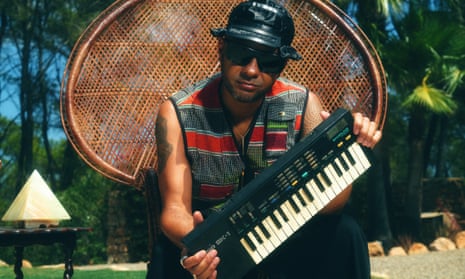

‘Music dug up from under the earth’: how trip-hop never stopped
Fused from jungle, rave and soul, trip-hop filled the coffee tables of the 90s, and is now inspiring Billie Eilish’s generation. So why is the term so despised by many?
N obody really wanted to be trip-hop. The stoner beats of Nightmares on Wax’s 1995 Smokers Delight album were era defining, but it carried the prominent legend: “THIS IS NOT TRIP HOP”. James Lavelle’s Mo’ Wax label flirted with the term after it was coined by Mixmag in 1994, but quickly switched to displaying it ostentatiously crossed out on their sleeves. Ninja Tune did print the phrase “triphoptimism” on a king size rolling paper packet in 1996, but only as a joke about escaping categories.
“I always disliked the term,” says Lou Rhodes of Lamb, “and I would always make a point in interviews of challenging its use in regard to Lamb.” Mark Rae of Rae & Christian similarly says: “I would give a score of 9/10 on the lazy journalist scale to anyone who placed us in the trip-hop camp.” And Geoff Barrow’s ferocious hatred of the term – let alone its application to Portishead – has become the stuff of social media legend.
The distaste is understandable. The template of crawling beats, cinematic strings and dubby basslines, usually with a female vocalist and weed-smoking signifiers, became one of the most ubiquitous sounds of the late 90s. The phrase itself stretched to become a catch-all for any and all downtempo music, from wafty supermarket-checkout budget CD “chillout” to highly crafted UK soul. It very quickly became the object of snobbery, called “coffee table music” by those who found the idea music could be comforting or domesticated an anathema.
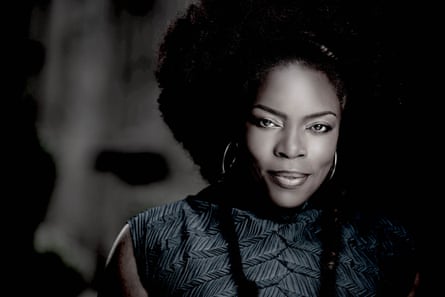
But whatever you call it, the specifically 90s downtempo vibe abides. Nightmares on Wax’s new album, Shout Out! To Freedom …, shows producer George Evelyn as committed to cosmic beats, and as inspired, as ever, and Smokers Delight got a deluxe reissue treatment last year. Martina Topley-Bird ’s Forever I Wait (featuring several productions by Robert “3D” Del Naja of Massive Attack), the reformed Sneaker Pimps’ Squaring the Circle, and even Saint Etienne ’s mostly instrumental I’ve Been Trying to Tell You all meander moodily in classic trip-hop style. Jhelisa , whose albums in the 90s easily bridged the gap between trip-hop and acid jazz, is back and on spectacularly trippy form with 7 Keys V.2, too.
And perhaps even more significantly, younger musicians are channelling the sound. Some of the most high-profile acts in the world – Billie Eilish, Lana Del Rey, Lorde – are unabashed in these 90s references. Alicia Keys’ new single, Best of Me, couldn’t be more trip-hop if it was made in a smoky Bristol basement in 1995. In the leftfield, acts such as Young Echo, Tirzah and Space Afrika explore some oddly familiar dark, dubby spaces, the latter citing Tricky as a key precedent. A lot of the new UK soul and jazz, from Jorja Smith through Children of Zeus to Moses Boyd and Sault, is distinctly trip-hoppy; Arlo Parks’ Mercury prize-winning album is steeped in it, as is tattooed, cosmic dub-soul provocateur Greentea Peng. Homebrew “lo fi” remixes of anime and game themes, which could easily pass as trip-hop, regularly clock up tens of millions of streams on YouTube, as do streams of trip-hoppy “beats to study/chill/sleep to”. Even UK drill is demonstrating a connection, in the album False Hope by Tara Mills , with music by drill and road rap producer Carns Hill. “It’s interesting that whole era’s come round again,” says Evelyn, remarking on the extraordinary Afghan-German producer Farhot’s similarity to DJ Shadow. “Then of course you start thinking: am I that old?”

To understand the durability of these sounds, it’s worth looking at some of the objections to the way they were labelled. Evelyn grew up with reggae soundsystem culture and was a hip-hop and electro fanatic, who breakdanced competitively as a teen. He regarded his early rave tunes as hip-hop collage in the tradition of instrumentals by Mantronix, Marley Marl, DJ Red Alert and co. “But,” he says, “in the UK we’re really good at taking something and making it our own, and when I think about that whole 90s period, it was exciting: we were doing that whole downtempo thing, but fused with all that other exciting electronic shit that was happening at the same time. The drum’n’bass thing, the jungle thing, that was all born out of the same set of influences. I do think about the 90s a lot. It was exciting; it felt like a new sound was coming out of the UK every three days.”
Rhodes, too, took inspiration in the breakbeat collage of rave. “Our background was nights at the Haçienda and Manchester pirate stations,” she says, remembering Peter Bouncer’s vocal over Shut Up and Dance’s breakbeats on the 1992 rave track Love Is All We Need. “My mum was a folk singer, and I felt the pull to write songs that danced around those fucked-up beats. That was the impetus for Lamb.” The closeness to techno, rave and electronica was embodied in labels such as Warp, Ninja Tune and Mo’ Wax, where Squarepusher, Autechre, Roni Size and Carl Craig would sit alongside – or remix – downtempo acts. It’s a lineage explored in the 2020 book Bedroom Beats & B-Sides by Laurent Fintoni , which also explores how trip-hop influenced the likes of Flying Lotus (an avowed Portishead fan), and thus the experimental “beat scene” and 21st century hip-hop more broadly.
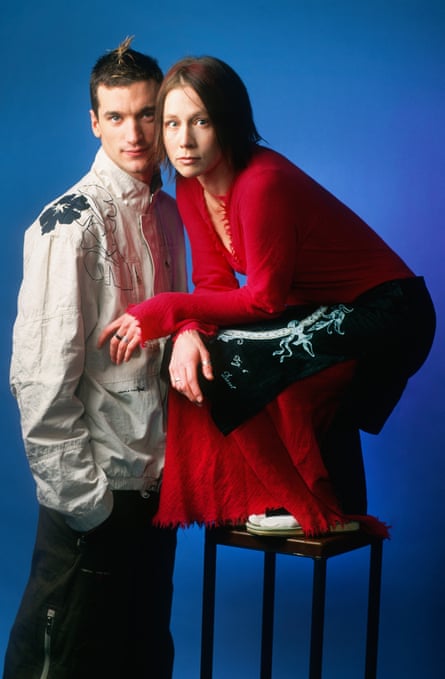
The other vital precursor was the UK’s unique soul lineage. “Sade, Cymande, Soul II Soul,” remembers Evelyn, “that was the foundation of our whole thing too. Even when we were rocking [reggae] soundsystems, you’d always have that half-hour or so when they’d play street soul or rare grooves. That all influenced all of us; I’m sure someone like [Massive Attack’s] Daddy G would say the same thing.” Through the late 80s and early 90s, acts such as Smith & Mighty, the Sindecut, Young Disciples and, of course, Soul II Soul and Massive Attack made a very distinctly British laid-back breakbeat sound ubiquitous from charts to underground clubs. The acid jazz movement overlapped with this, too: it’s the scene Mo’ Wax emerged from, and Liam Howe of Sneaker Pimps recalls, around 1993, “taking our white labels around the record shops of Soho, where you might bump into [acid jazz movers] Kevin Beadle, Gilles Peterson, James Lavelle and Patrick Forge … we were making peculiar, laid-back dance stuff that at the time we referred to just as ‘head music’.”
Jhelisa Anderson is one of the more obvious connections to the soul/jazz world, but also one of the few musicians who fondly embraces “trip-hop” as a term. Mississippian by birth, she relished British eccentricity and independence, as compared with a US industry that “would’ve had me trying to copy Janet Jackson”. She found, in Portishead , Tricky and Topley-Bird, “a version of modern blues, a depth and darkness” that drew a line from 60s and 70s soul, but also had a connection to “something old and pagan that I heard in Thom Yorke and shoegaze, a different kind of ancient expression of feeling blue, of being dark”.
That conception of a kind of specifically British blues isn’t so far fetched. Tara Mills wasn’t born when Massive Attack’s Unfinished Sympathy came out, but cites it as one of her favourite songs: “I’ve cried to that song, I’ve driven home too fast, upset, in the middle of the night, to that song.” And she found precisely the right darkness in Carns Hill’s drill beats to “make you feel something in that same way”. And the moodiness and melancholy have permeated through to a new generation in many other ways. Rhodes hears “a kind of bloodline running through James Blake and the xx” to Billie Eilish and co. Her son Reuben, who releases downtempo beats as Joseph Efi, connects the “Bristol sound” of Portishead and Massive Attack to the ineffable sadness of Burial. “There’s something about the melancholia of those Bristol tunes,” he says, “that could’ve only come from the depths of a small British city. Music dug up from under the earth or heard in the pouring rain on your walk home at night.”

This mood has gradually spread around the world. As well as through electronic and hip-hop artists such as Flying Lotus, and ubiquity of tracks such as Rob Dougan’s Mo’ Wax hit Clubbed to Death in Hollywood soundtracks, the British moodiness found its way into big pop exports. Mark Rae notes that “our production and writing of the track The Hush by Texas-influenced Dido, and the domino effect is created when that language is taken to the mainstream successfully”. It’s not a big leap to hear trip-hop echoes in Mark Ronson’s work with Amy Winehouse and Adele – and there are direct connections, too: Howe, for example, has passed on the trip-hop gene as a writer and producer for the likes of FKA twigs, Lana Del Rey and, indeed, Adele.
It seems like the further we get from its origins, the less toxic the phrase seems. Even Topley-Bird, who never accepted it at the time “because I thought we felt pretty unique”, says “in America people talk about trip-hop without any sense of shame or embarrassment, which is endearing … And a few friends are telling me that artists like Billie Eilish sound like me – which can’t be a bad thing. I came back with new music at the right time!”
Nightmares on Wax’s album Shout Out! To Freedom … is out now on Warp. Mark Rae’s novel and soundtrack The Caterpillar Club is out now on Mark’s Music. Sneaker Pimps’ album Squaring the Circle is out now on Unfall. Jhelisa’s album 7 Keys V.2 is out now on Dorado. Martina Topley-Bird’s self-released album Forever I Wait is out now. Tara Mills’ album False Hope is out now on CL Management. Joseph Efi’s EP Candour is out now on Lowlife.
- Pop and rock
- Martina Topley-Bird
- Massive Attack
- Drum'n'bass
Comments (…)
Most viewed.
Spotify is currently not available in your country.
Follow us online to find out when we launch., spotify gives you instant access to millions of songs – from old favorites to the latest hits. just hit play to stream anything you like..

Listen everywhere
Spotify works on your computer, mobile, tablet and TV.

Unlimited, ad-free music
No ads. No interruptions. Just music.

Download music & listen offline
Keep playing, even when you don't have a connection.

Premium sounds better
Get ready for incredible sound quality.
Fact Magazine
- Exhibitions
Now reading:
The 50 best trip-hop albums of all time
Share this:
- Access All Areas
- Against the Clock
- Documentaries
- FACT Freestyles
- In The Studio
- How To Make A Track
- FACT Premieres
- Record Shopping
- Singles Club
- Dubplate Masters
- The Vinyl Factory Films
Illustration by: Mat Pringle
Like it or not, trip-hop is a thing. I say this as someone who, for the past 18 odd years, has loved the music just as much as I’ve hated the term.
Coined in June 1994 by Andy Pemberton in a feature for Mixmag , trip-hop was used to describe the recent stylistic shift of the Mo’ Wax label and that music’s popularity in dance circles, particularly in after hours sessions. Pemberton heralded trip-hop as a psychedelic take on hip-hop and the first valid alternative to America’s dominance of the music.
The DNA of trip-hop was more complex than its reduction to bite-sized adjectives. One strand came from hip-hop, which had fed the musical imagination of a new generation for over a decade, while another strand came from rave, which had provided further stylistic possibilities with its fusion of drum machines, breaks, samples and synthesisers. Sound systems, digging, dub, chill-out rooms, early globalisation and technology also acted like so many molecules attaching themselves to a new idea of what hip-hop could be. Trip-hop was a logical evolution in a decade during which everyone came down from a partying high to face the reality that hip-hop and dance music were being co-opted by the mainstream; dreams of a new sonic utopia crushed by the relentless onslaught of capitalism.
Just as techno had become a synonym for dance music, trip-hop soon became a crutch for journalists and marketers wanting to signify hip-hop without rappers. Most notably, it became a byword for the Bristol sound epitomised by bands like Massive Attack and Portishead. In 1998, The New York Times retconned Massive Attack’s debut album Blue Lines as the so-called genre’s inception point.
On the ground, the sound did resonate in a genuine way among a new generation of musicians seeking freedom to experiment. In London, Ninja Tune played yin to Mo’ Wax’s yang. Both labels crafted a unique visual dimension and assembled expansive rosters. In Paris, DJ Cam pushed out his own blunted beats to eager continental heads. In Austria, Kruder & Dorfmeister added an extra layer of dub and turned trip-hop into downbeat in a haze of weed paranoia. In New York City, a loosely linked group of artists, thinkers and musicians spread from downtown Manhattan to Brooklyn’s cheap warehouses to imagine their own version of the sound, which The Wire magazine dubbed illbient. No matter the names or the execution, the DNA was the same.
It was always going to end badly. Mo’ Wax, often seen as responsible for the sound, originally kicked off riding the acid-jazz wave, a sound that soon exhausted itself into a creative cul-de-sac. By the late 1990s, trip-hop had become nothing more than limp, often stoner-friendly, coffee table hip-hop beats. It was music for people who felt rap was too dangerous. To those who believed in it though, it always held a promise of things weird and wonderful.
Alongside IDM (another etymological faux pas from the 1990s), trip-hop presaged the beat scene of the late 2000s, a continuation of the ideas and aesthetic it first articulated. When I spoke to Daddy Kev in 2012, he pointed to Mo’ Wax as one of the key influences for Low End Theory. Flying Lotus has cited DJ Krush as an influence. And tastemakers like Gilles Peterson have championed the music’s evolution across decades.
In putting together this list, we tried to take all of this into account. There is no purism to indulge in, because there is nothing pure about trip-hop. As DJ Food’s Strictly Kev put it recently, at its best the music was “psychedelic beat collages, usually instrumental, embracing samples, analogue electronics and dub FX.” The list is contained to the 1990s for historical accuracy and tries to steer away from the music’s strongholds to show the width and breadth of the sound. As such, you’ll find artists from France, Northern Ireland, Japan, America, Denmark and Brazil represented as well as releases from Asphodel, Wordsound, Rephlex, Warp and a handful of majors. It’s also worth noting that when an artist had multiple worthy albums (for instance, Portishead or Massive Attack), we only included their most definitive moment.
Listen to the whole list as a playlist via YouTube or Spotify .

50. London Funk Allstars London Funk Volume 1 (Ninja Tune, 1995)
London Funk Allstars’ Ninja Tune debut will likely sound dated to most who come across it for the first time today. And yet, amid the simple breakbeats, classic loops and obvious vocal chops there’s a real beauty that captures the essence of a simpler time when the possibilities seemed endless and technology was providing new ways to think about music.

49. Bomb The Bass Clear (4th & Broadway, 1994)
Tim Simenon might not be the most obvious pick for a trip-hop list, but Clear exhibits plenty of the genre’s hallmarks. Tossing away the rave collage aesthetic that had made ‘Beat Dis’ such a massive success, Simenon weaves an ambitious narrative, tying together dub and hip-hop-influenced tracks with heady spoken-word clips from writers Benjamin Zephaniah and Will Self. There are also notable contributions from influential figures such as Leslie Winer (if you haven’t heard her 1993 album Witch , you should seek it out immediately), Bernard Fowler and Bim Sherman, opening up a dialogue between New York, Jamaica and the UK that would remain at the center of the genre for years to come.

48. Slicker Confidence in Duber (Hefty, 1998)
John Hughes’s Chicago-based Hefty imprint was crucial in cementing the relationship between Chicago’s burgeoning post-rock scene (led by Tortoise) and the seemingly more experimental (and more European) IDM and trip-hop genres. This union would reach its peak in 2001 with Telefon Tel Aviv’s massive Fahrenheit Fair Enough , but a few years prior, Hughes himself was making similar strides under his Slicker moniker. Confidence in Duber sits firmly alongside Scott Herren’s early Delarosa & Asora experiments, snatching the breaks ‘n’ blunts from trip-hop and injecting them with digital belches cribbed from the IDM playbook. Oddly enough, it’s aged better than you might expect, and is well worthy of re-investigation.

47. Meat Beat Manifesto Subliminal Sandwich (Interscope, 1996)
Subliminal Sandwich is Meat Beat Manifesto’s fourth album and their first on a major label via Nothing Records, a subsidiary of Interscope helmed by Trent Reznor that was intended to capitalise on the success of Nine Inch Nails. The album proved a critical and commercial flop, though it remains an interesting offering, drawing links between trip-hop, dub, industrial and ambient with a touch of psychedelia. Split across two CDs, it’s the first half that’s of most interest here as the rest focused on drone and ambient compositions. The 18 tracks draw heavily on samples and breaks combined with pulsing basslines, heavily processed vocals and an overall gritty finish that makes it sound like the bastard child of Mo’ Wax and Bill Laswell’s Axiom Records.
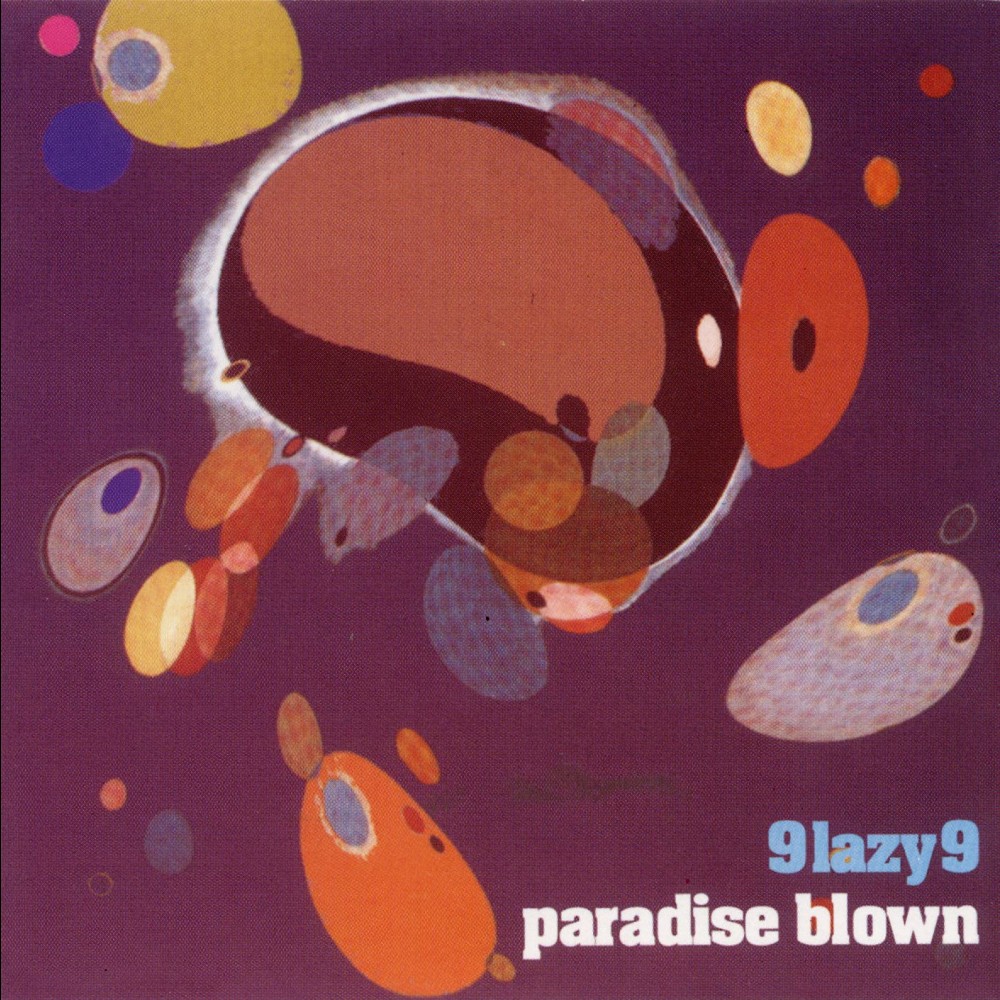
46. 9 Lazy 9 Paradise Blown (Ninja Tune, 1994)
Early Ninja Tune beatmakers 9 Lazy 9 might not sound as crucial now as they did back in the mid 1990s, but there’s still fun to be had on Paradise Blown , their second album. The Italy-based group (including Funki Porcini’s James Braddell) added a distinctly light-hearted lounge quality to a genre that could often dwell in the darker crevices, and as such Paradise Blown can be filed alongside offerings from Tim ‘Love’ Lee and Tipsy, even if it’s not anywhere near as endearingly experimental.

45. UNKLE Psyence Fiction (Mo’ Wax, 1998)
Mo’ Wax boss James Lavelle’s pet project, UNKLE, remains a controversial part of the trip-hop canon. With distance, Psyence Fiction is possibly more enjoyable than it was back in 1998, and it highlights the genre’s crossover potential with guest spots from Radiohead’s Thom Yorke, The Verve’s Richard Ashcroft (then riding high after the success of ‘Bitter Sweet Symphony’) and Badly Drawn Boy, but it’s hard not to see it as a slightly cynical marketing exercise. DJ Shadow, who was drafted to co-write the album, was quick to speak out about his unhappiness with both the process and the result, but Psyence Fiction is representative of a time and place, and shows trip-hop’s promise as it was being co-opted and transformed into something that labels could whitewash and monetize. Zero 7 was just around the corner.

44. Tipsy Trip Tease – The Seductive Sounds of Tipsy (Asphodel, 1996)
It might be a stretch to classify Tipsy as trip-hop, but the Californian duo of Tim Digulla and David Gardner certainly used many of the same tools as their European peers. Pillaging loops from a wide variety of lounge and exotica records, Digulla and Gardner came up with a dusty, defiant and undoubtedly downbeat look at sound collage. Since it veered away from obvious breaks and beats, Trip Tease actually holds up markedly better than some other records of the era, and ends up sounding closer in style to David Holmes, with a smoky, cinematic quality.

43. Justin Warfield Field Trip To Planet 9 (Qwest, 1993)
Released a year before the term trip-hop was coined in Mixmag , Justin Warfield’s first and only solo album is included here largely thanks to Strictly Kev, who recently pointed out its relevance with regard to the music’s supposed psychedelic properties. My Field Trip To Planet 9 is a rap album, cut from the same cloth as Check Your Head -era Beastie Boys and Digable Planets. But remove its vocals and behold music that sounds like it wouldn’t be out of place on Mo’ Wax or Ninja Tune a few years later. At its best, trip-hop was music for b-boys on acid, as Warfield sang on the album’s single. A year later, he provided the vocals for Bomb The Bass’s ‘Bug Powder Dust’, another bonafide rap-on-acid classic that got the trip-hop treatment via Paris’s La Funk Mob and Vienna’s Kruder & Dorfmeister.

42. Smith & Mighty Bass Is Maternal (More Rockers/!K7, 1995)
You can’t have a conversation about trip-hop without mentioning Bristol, and you can’t talk about the Bristol scene without giving a nod to Smith & Mighty. The West Country duo took soundsystem culture and a hefty scoop of the ideas informing an increasingly popular jungle scene and helped formulate an entire sound. Without them, Portishead, Tricky and Massive Attack simply wouldn’t sound the same. Bass Is Maternal is the best representation of their scope, and illustrates their experimentation as they attempted to summarize the meeting point between UK rave culture and Jamaican dub. It’s not always successful, but to ignore it is to disregard an important chapter in British musical history.

41. DJ Vadim U.S.S.R Repertoire (The Theory of Verticality) (Ninja Tune, 1996)
The first of Vadim’s four albums for Ninja Tune, U.S.S.R Repertoire is a weeded-out take on an American musical form by a Russian immigrant living in the English capital – an instrumental microcosm of hip-hop’s globalisation. Beneath a layer of simplicity, there is depth to Vadim’s approach; the beats feel expansive, the music inviting the listener to cradle in the grooves of the breaks and warmth of the bass. Much of this debut also acts as an echo of what Wordsound and We™ were doing across the ocean at the same time. As Vadim’s 1995 debut on his own Jazz Fudge imprint proclaimed, heads weren’t ready.
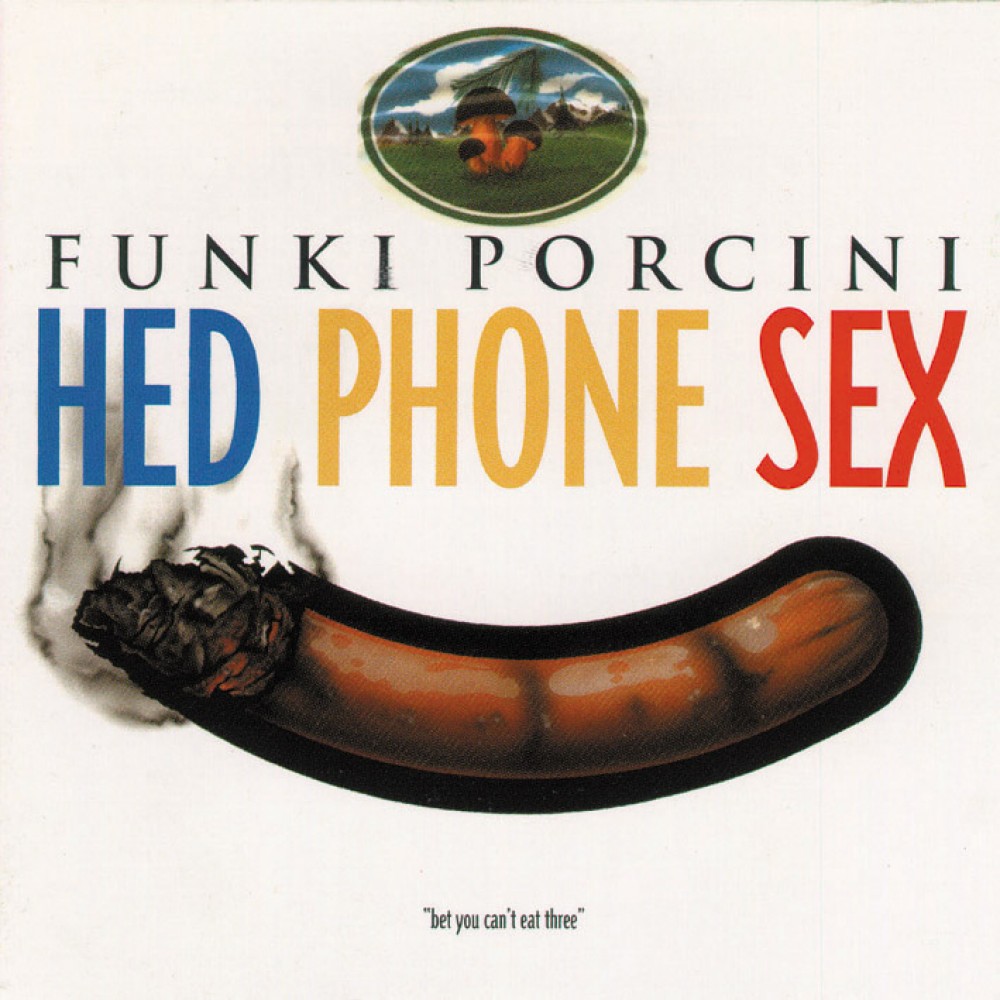
40. Funki Porcini Hed Phone Sex (Ninja Tune, 1995)
After a decade penning film and TV music in Italy, British producer James Braddell decided to head to London and set up his own studio, where he would use some of his commercial writing tricks to come up with Funki Porcini, one of the most recognizable names on Ninja Tune’s early roster. This was trip-hop with a side helping of very English humour, from the moniker itself to the record’s awkwardly suggestive cover. Musically, Braddell laid out a template that would be traced over for years to come with his combination of dusty hip-hop rhythms and booming dub bass. The swirling, reverb-drenched samples just added an extra layer of thick smoke to an already bloodshot premise.

39. Red Snapper Prince Blimey (Warp, 1996)
If the elephant in the room here is acid jazz, Red Snapper are one of the rare acts who addressed it head-on. Prince Blimey is their first full-length and is certainly more overtly jazzy than most of the records we’ve highlighted on this list. That’s not a negative though, the trio – a bassist, guitarist and drummer – had genuine chops, and managed to inject their musical training into a more contemporary mode, touching on trip-hop and drum & bass without ever sounding forced. It’s a concoction that might now sound too close to the coffee table dreck that sat next to a copy of American Psycho and a rolled up tenner at the close of the millennium, but Red Snapper managed, somehow, to keep things edgy and unusual. They even, somewhat inexplicably, ended up touring with The Prodigy.

38. Various Artists DJ Kicks: Kruder & Dorfmeister (!K7, 1996)
Despite becoming the figureheads of Austria’s downbeat scene (a continental take on trip-hop), Viennese duo Kruder & Dorfmeister never released an album. Instead it was through their debut EP, G-Stoned , and absurdly popular mix CDs that they accrued fame. Their 1996 contribution to !K7’s DJ-Kicks series captured the sweet spot between the blunted grooves of chill-out rooms and the rolling breaks of jungle, an approach they’d refine two years later on The K&D Sessions . K&D’s arrival on the scene came at a time when trip-hop had started to resemble a safe version of hip-hop for those seeking thrills without effort, and their mixes remain as close as you can get to the bland, coffee table take on the genre without feeling too sick.

37. Wagon Christ Throbbing Pouch (Rising High Records, 1994)
With releases under a variety of aliases on seminal labels like Ninja Tune, Mo’ Wax, Planet Mu and Rephlex throughout the 1990s, Luke Vibert is one of the artists that best connects the dots between the various styles and ideas that fed into trip-hop. His second release as Wagon Christ pieces together elements from hip-hop, the burgeoning UK dance music scene and electro into a colourful sonic puzzle that glides along in splendid fashion. Or as Select put it at the time, “the missing link between Aphex Twin and Mo’ Wax.”

36. Tim ‘Love’ Lee Confessions of a Selector (Tummy Touch, 1997)
As boss of the Tummy Touch label, Tim ‘Love’ Lee had an important part to play in the development of downbeat and trip-hop, not least thanks to his discovery of future genre stars Groove Armada, but the less said about that the better. Confessions of a Selector might be his finest achievement, not quite reaching fully into the trip-hop cookie jar, instead relying on Lee’s estimable crate digging expertise. The hallmarks of the genre are there, but prettied up with luscious tropical vistas and an eccentric (but smart) cut-and-paste quality that isn’t a million miles from US duo Tipsy.

35. Psychonauts Time Machine (Mo’ Wax, 1998)
Psychonauts were Mo’ Wax’s secret weapon, so much so that James Lavelle had them provide mixes under his name – ghost mixed, if you will. Time Machine was his payment for services rendered, and it’s a fine document of the era, not only rounding up some of Mo’ Wax’s finest moments, but also showing just how important turntablism and truly creative mixing was to the scene’s development. Most songs don’t get more than a minute of air time as the duo power through almost 50 tracks in half an hour, blending together cuts from genre luminaries DJ Krush, Luke Vibert, DJ Shadow, La Funk Mob and more. If you need a quick-to-digest taster of the genre, this is as good as it gets.

34. Prince Paul Psychoanalysis (What Is It?) (Wordsound, 1996)
We can already hear the furious typing of wronged hip-hop heads asking with disgust why Prince Paul is even on this list. Psychoanalysis is here for a bunch of reasons: it was originally released by Wordsound, a label most associated (wrongly or not) with illbient, NYC’s answer to trip-hop; it’s a rare example of a fully instrumental hip-hop album from a city that, in the 1990s, had no time for anything that didn’t have rappers on it (Skiz Fernando Jr., who ran the label, recounted stories of Fat Beats refusing to stock the album at the time); and it’s basically 15 tracks of Prince Paul taking his whole skit philosophy to its most absurd conclusion. For all these reasons and more, Psychoanalysis remains a slept-on classic from the 1990s, a half-way point between trip-hop’s European roots and its infatuation with American hip-hop.

33. The Herbalizer Blow Your Headphones (Ninja Tune, 1997)
Jake Wherry and Ollie Teeba’s The Herbalizer project was a fine example of trip-hop’s most visible back-and-forth with “proper” hip-hop. They weren’t afraid to work with emcees, and on Blow Your Headphones , their second album, they found a kindred spirit in Natural Resource’s What? What?, now better known as Jean Grae. She added an important element to Wherry and Teeba’s jazz-flecked backdrops, and while it’s certainly true that many of trip-hop’s consumers were looking for a safer alternative to charged US rap, The Herbalizer walked the tightrope admirably, and were markedly more successful in bridging the genres than many of their peers, who buckled when attempting to integrate emcees.

32. The Bug Tapping the Conversation (Wordsound, 1997)
Another release that will likely raise a few eyebrows for its inclusion, The Bug’s debut album nonetheless fits within the wider idea of what trip-hop could, and should, be about. There are a few other reasons too: it was released on Wordsound; DJ Vadim provided the drum samples; and, like the best trip-hop releases of the 1990s, it was a soundtrack for life, with the listener invited to let their mind fill in the blanks. The blend of hip-hop, dub and industrial influences that would go on to characterise Martin’s work is found here at its rawest and tracks like ‘Those Tapes Are Dangerous’ show a darker side to trip-hop’s blunted potential.

31. Neotropic Mr Brubaker’s Strawberry Alarm Clock (Ntone, 1998)
Riz Maslen is often more widely associated with electronica (no doubt thanks to her early association with Future Sound of London), but her second Neotropic album Mr Brubaker’s Strawberry Alarm Clock is one of the trip-hop era’s hidden gems. The record appeared on the Ninja Tune sister label Ntone, and is one of the few full-lengths on this list that still sounds truly bizarre and alien. On top of the usual dusty breaks, Maslen lavished elements absorbed from IDM’s palette but left behind its seemingly random, artificial bent. The conversation between trip-hop and IDM was very visible in the late 90s – Plaid being the most obvious example – but Maslen avoided many of the trappings of both scenes, emerging with a record that was probably “too future” for most beatheads.

30. Various Artists Headz (A Soundtrack Of Experimental Beathead Jams.) (Mo’ Wax, 1994)
After a forgettable false start peddling iffy acid jazz, Mo’ Wax made a stylistic shift in 1994, kickstarting a four-year period that continues to resonate two decades on. The first Headz compilation is a neat 18-track digest of that transition, a declaration of what was to come. Influences, ambitions and comments on the status quo of the time are found in the slowed down grooves and samples as well as the track titles: ‘Ravers Suck Our Sound’, ‘Contemplating Jazz’, ‘In Flux’, ‘The Time Has Come’. The titular beatheads may have seemed like a stoned, uncreative bunch at the time but their aesthetic has proven resilient. Alongside obvious names like DJ Shadow, La Funk Mob and R.P.M, Headz also featured Nightmares On Wax, Autechre, Howie B. and various members of Major Force.

29. Various Artists Eleven Phases (Sublime, 1998)
Eleven Phases is a true gem, a little-known compilation of downtempo and instrumental tracks from many of Detroit’s finest techno artists including Robert Hood, Kenny Larkin, Eddie Fowlkes and Anthony Shakir. Originally released in Japan only, the compilation makes for a fascinating snapshot of the hip-hop roots and leanings of the city’s dance music pioneers. Will Web’s ‘Cosmic Kung-Fu Funk’ slows down techno’s rawness to a blunted, hip-hop-influenced slouch while Robert Hood’s ‘Mystique’ wouldn’t be out of place on a !K7 compilation. Despite emerging entirely outside of the 1990s trip-hop world, Eleven Phases shows how the core ideas and principles of the aesthetic bled into various scenes and cities throughout the decade.

28. Solex Solex vs. Hitmeister (Matador, 1998)
It makes sense that one of the best (and weirdest) records in a genre that deifies crate diggers should come from a record store owner. Elisabeth Esselink’s debut album was hard to categorize when it landed in 1998, there were elements pilfered from plenty of genres but not really enough of one or the other for categorization. Not only this, but Solex vs. Hitmeister emerged on the Matador label, then best known for releasing indie records. It was certainly aimed at a different crowd from the usual green-thumbed beatheads with a complete collection of Mo’ Wax 12″s and a line of Gundam figurines on their desk, and that was a good thing. Esselink was a breath of fresh air, and Solex vs. Hitmeister ‘s peculiar charms still resonate as she tangles her voice through hiccuping collages of unwieldy samples and collapsing drum machine loops.

27. Various Artists Funkjazztical Tricknology (Ninja Tune, 1995)
Released in 1995, the first Ninja Tune compilation arrived between the two Headz volumes from Mo’ Wax, providing a perfect counterpoint that showed how similar yet different the London powerhouses were at the time. Focused largely on early Ninja artists such as 9 Lazy 9, The Herbaliser, Coldcut and DJ Food, it also features appearance from Austria’s downbeat kings Kruder & Dorfmeister and Attica Blues, who had just joined Mo’ Wax. As with the first Headz volume, Funkjazztical Tricknology also marked the beginning of a shift for Ninja Tune with its releases becoming essential not just for the music but also their design, packaging and words of in-house scribe Shane Solanki, who invented the Ninjaspeak that played into the label’s growing mythos.

26. DJ Food Recipe For Disaster (New Breed, 1995)
No other artist embodies Ninja Tune quite like DJ Food, the multifaceted DJ project set up in the early days of the label by its founders, Coldcut. As its name implies, DJ Food was set up to provide DJs with the necessary ingredients to do their thing. For the first five years, the collective – Coldcut, Strictly Kev and PC – released loops and other tools via the Jazz Brakes series, some of which is great, while some is just as forgettable as the more tepid early Mo’ Wax releases. In 1995, DJ Food went for a meatier offering with their debut album, A Recipe For Disaster . Using the same approach that had made their Solid Steel mixes and live appearances unmissable, they pieced together 16 tracks that veer from downtempo moody to breakbeat furious and proved that they knew their way around the trip-hop kitchen just as well as the best of them.

25. DJ Krush & Toshinori Kondo Ki Oku (Apollo, 1996)
The collision of avant-garde jazz and trip-hop was bound to happen. Experimental players throughout the world were desperate to open up a conversation with younger producers, and trip-hop (as well as drum & bass) was an obvious crash-pad, considering its liberal pilfering of the genre via sampling. Ki Oku is one of the best examples of this collision, despite trumpeter Toshinori Kondo turning in a surprisingly straightforward performance throughout. (This is a musician who had gone head to head with Peter Brötzmann and John Zorn – we weren’t exactly expecting him to toot out a cover of Bob Marley’s ‘Sun Is Shining’.) But it works. What could, in the wrong hands, have been one of the worst abuses of both jazz and trip-hop tropes, is actually remarkably measured and incredibly listenable.

24. We™ As Is. (Asphodel, 1997)
We™ formed by accident in the early 1990s after DJ Olive had been asked to contribute a track to Wordsound’s Certified Dope Vol.1 compilation for which he roped in fellow Brooklyn musicians Lloop and Once11. In the following years the trio became one of the emblematic acts of New York’s short-lived illbient scene, drunk off the possibilities afforded by the experiments that drove their creative ecosystem, where ambient, dub and hip-hop floated freely in a haze of smoke between cheap Brooklyn lofts and downtown squats. Their 1997 debut for Asphodel is a blistering run through hip-hop instrumentals, ambient lulls and drum & bass exercises that highlight the music’s chill-out roots and breakbeat fetish.

23. Amon Tobin Bricolage (Ninja Tune, 1997)
Known for his virtuoso sound design and increasingly complicated A/V shows, Brazilian producer Amon Tobin might seem like an odd addition to a list of trip-hop albums, but bear with us. His second album Bricolage emerged from the dust of trip-hop, appearing on Ninja Tune and offering a view of the scene through cracked glass. Tobin provided a more precise (and, let’s be honest, less stoned) take on the trip-hop sound, absorbing drum & bass and IDM influences without batting an eyelid. The result is an accomplished midpoint between the edit-heavy trickery of Squarepusher and Aphex Twin and the moody soundscapes of Krush, Vibert and Shadow.

22. Third Eye Foundation Semtex (Linda’s Strange Vacation, 1996)
Matt Elliott may have been a total outlier to most of the scenes that piled up to intersect at trip-hop, but Semtex is an example of how certain musicians could absorb familiar tropes without sacrificing originality. Elliott’s Third Eye Foundation debut fused breaks and booming sub bass with sounds more common to shoegaze: endless reverb, screaming and grizzled distortion. Traces of drum & bass (which would emerge more clearly on Elliott’s follow-up album Ghost ) slipped in-and-out of focus, and Semtex doesn’t really feel like part of one movement or another, rather adjacent and dizzy from ether and cheap draw. If anyone tries to tell you Bristol was just Portishead, Tricky and Roni Size, play ’em this burner.

21. Attica Blues Attica Blues (Mo’ Wax, 1997)
Like many of the artists and albums featured in this list, Attica Blues is trip-hop thanks to the location and affiliations of its creators at the time. A trio composed of producers Charlie Dark (then D’Afro) and Tony Nwachukwu (of CD-R fame) alongside singer Roba El-Essawy, Attica Blues made jazz-influenced hip-hop that happened to have a woman singing on it instead of emcees rapping. In the 1990s, thanks to genre purism, that meant your shit wasn’t rap and therefore wasn’t hip-hop. Attica Blues is one of Mo’ Wax’s better and more slept-on full lengths, a deft exercise in sampling, programming and arranging, back when doing so took more than a few clicks of a mouse.

The best trip-hop owed plenty both to the art of mixing and the cut-and-paste aesthetic of the 1980s, which is why a handful of releases on this list are mix CDs rather than albums. Cold Krush Cuts is a perfect example of how those two ideas influenced the music at its peak, and has the bonus of acting as a handshake between the two London labels most associated with the tag. Krush was Mo’ Wax’s Japanese weapon, and Coldcut and DJ Food were Ninja’s own zen masters of audio collage. The result is a still-classic double CD with the London boys arguably edging it thanks to a wide selection and craftsmanship reminiscent of their acclaimed Journeys By DJ entry; DJ Krush goes for the mind, limiting his selections to only six of Ninja Tune’s artists and slicing the cuts up in his trademark less-is-more approach.

19. Depth Charge 9 Deadly Venoms (Vinyl Solution, 1994)
A natural progression from the movie-obsessed NY rap of Wu-Tang Clan et al, 9 Deadly Venoms used a backbone of cult film samples to underpin gritty hip-hop instrumentals that helped inform a fast-growing scene. This was the blueprint for the Mo’ Wax 12″s to come: music based around the kind of nerd fandom that in 1994 was still a counter-culture. It still plays like an authentic labour of love for Jonathan Saul Kane, as he blends chops from The Evil Dead and Dirty Harry with collapsing breaks and ominous textures – it’s hardly surprising that the producer ended up establishing a company to issue UK versions of Hong Kong action movies.

18. Nearly God Nearly God (Island, 1996)
Described by Tricky as “a collection of brilliant, incomplete demos,” Nearly God is a bright, often-forgotten reminder of just how unmatched Tricky was in the 1990s. He called the record Nearly God , for fuck’s sake, and that wasn’t far from the truth. The album acted as a stop-gap between Tricky’s genre-defining Maxinquaye and his difficult (but almost equally brilliant) about-turn, Pre-Millenium Tension . It stands apart simply because of its scope – there are appearances from regular collaborator Martina Topley-Bird, but also tracks with Alison Moyet, Björk, Siouxsie and the Banshees and Terry Hall. What sounds like it could have been a self-indulgent victory lap for (back then) one of the UK’s most notorious stars is somehow a coherent, exemplary document of a peculiar time in British music. Tricky also has to be commended for having the good sense to veto a collaboration with Damon Albarn (and then Suggs) which could have easily been the straw that broke the camel’s back.
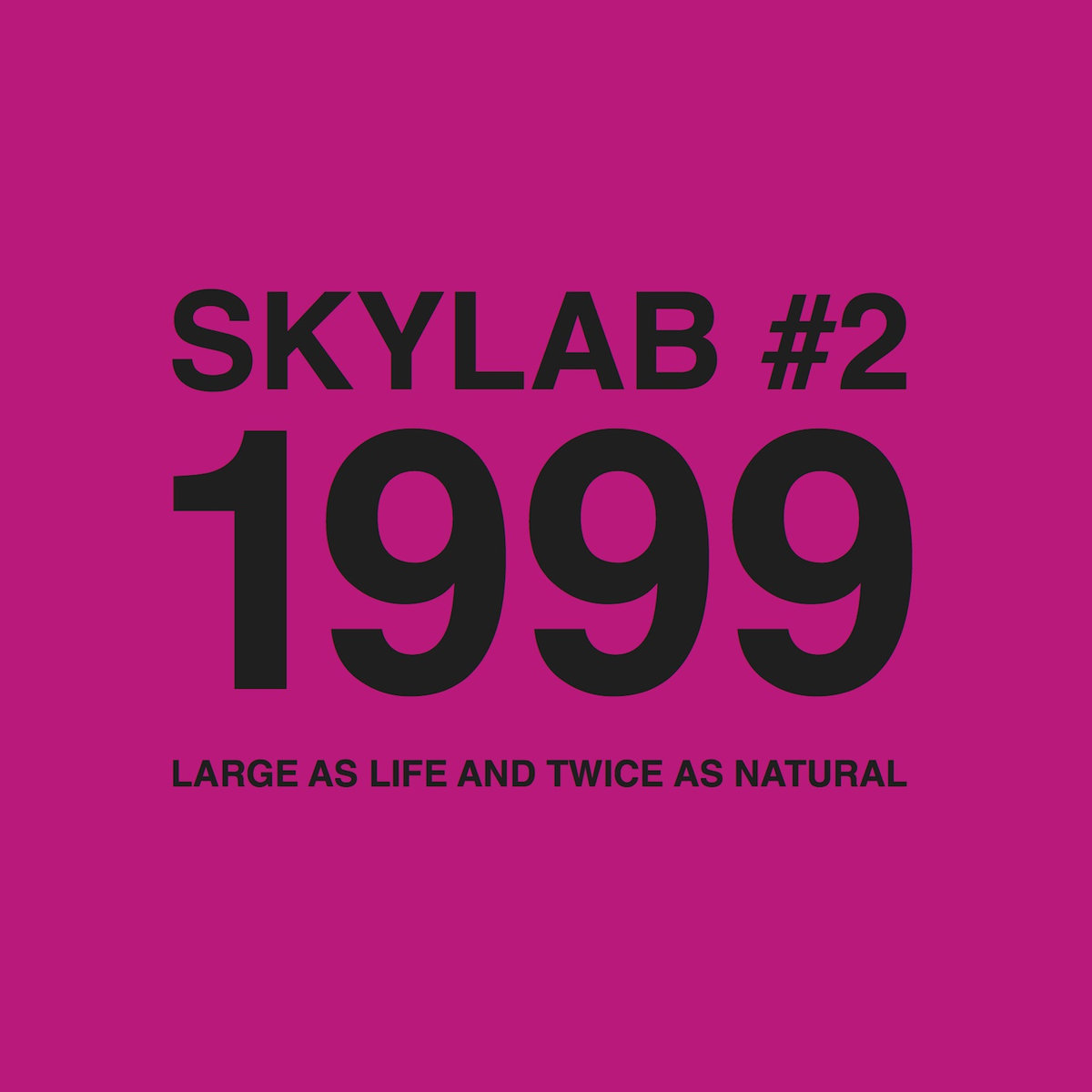
17. Skylab #2: 1999 “Large As Life And Twice As Natural” (Eye Q , 1999)
Skylab was a short-lived collective composed of Matt Ducasse, Howie B and the Japanese duo of Tosh and Kudo, aka Love TKO from Major Force. They released two albums on Sven Vath’s Eye Q label before disappearing, and their work was among the better but lesser-known of the trip-hop era. Ducasse has gone on record to state that their attachment with the genre was unintentional and that he saw their work as “more expansive, […] more in common with collage music […] or soundtracks.” And yet, those ideas were also at the heart of what the best trip-hop could be. In many ways Skylab were not so different to Portishead in both their intentions and execution. Their second album was released just as the label folded, leading it disappear into the cracks of time until a reissue by Tummy Touch earlier this year. Howie B had left by this point, and vocalist Debbie Sanders joined the trio to craft a beautiful record which really goes out there and was praised by both critics and knowledgeable fans.

16. Laika Silver Apples of the Moon (Too Pure, 1994)
Emerging from post-rock band Moonshake, Laika orbited the trip-hop genre without succumbing to many of its less flattering trappings. When guitarist and vocalist Margaret Fiedler commented in 1995 that her band was “just like trip-hop, but much much faster,” she was doing herself a massive disservice. A cursory listen might not even reveal too many obvious similarities – like Portishead, Laika were taking elements of post-rock, krautrock and certainly hip-hop to provide something reactionary, and different from the pervasive, laddish Britpop that was polluting the charts at the time. While their contemporaries Stereolab (and later, Broadcast) were experimenting with drum machines and synthesizers, Laika were integrating samples and a deep passion for jazz and dub. Silver Apples of the Moon is one of the most singular albums on this list, and one of the most rewarding.

15. Nightmares on Wax Smokers Delight (Warp, 1995)
Few records from this era quite capture the nexus of styles that trip-hop could represent at its best than Nightmares On Wax’s second album for Warp. Pulling from the same influences that defined the late 1980s rave explosion, Smokers Delight reconfigured the UK’s summer of love for the Discman generation while remaining just as suited to chill-out room comedowns or Ibiza sunset sessions.

14. REQ One (Skint, 1997)
Sure, Skint might still be best known for breaking Fatboy Slim, but don’t turn away just yet. Brighton-based producer (and sometime graf writer) REQ offered up one of the most blunted takes on the genre, almost by accident. His compositions didn’t pander to the popularity of the growing trip-hop scene, instead dwelling in a noisy, near-ambient back room. He made hip-hop instrumentals that sounded like they were being beamed in from a parallel universe via 14.4kbps modem, and in doing so, avoided being both pigeonholed and, well, popular. His brilliant debut album One has barely dated, fitting as well alongside DJ Spooky or even Dälek as it does anything the Bristol scene had to offer. One sounds, at times, like an MPC tumbling down a distant stairwell into a muddy lake, and we couldn’t think of a better recommendation than that.

13. Crooklyn Dub Consortium Certified Dope Vol.1 (Wordsound, 1995)
Skiz Fernando Jr.’s Wordsound label was in many ways the dubbed-out New York answer to Mo’ Wax, a home for what its founder coined dub-hop: music that blended the dusty boom bap that ruled the city at the time with the mixing desk mysticism of Jamaican dub. Certified Dope Vol.1 was Fernando’s attempt at cataloguing the music of like-minded artists who populated the Greenpoint and Williamsburg neighbourhoods in the early 1990s, including the likes of We™, Dr. Israel and Bill Laswell. Swinging like a pendulum between full-on dub and head-nod instrumentals, the compilation was one of the first to highlight the parallels between hip-hop’s sampling aesthetic and Jamaica’s dub.

12. DJ Krush Meiso (Mo’ Wax / Sony, 1995)
I imagine that choosing a favourite DJ Krush album is a little like asking parents to pick their favourite kid. A perfectionist who infused an American cultural import with the meticulousness of his own culture, the Japanese producer was the Far East’s answer to DJ Shadow, and together they would become Mo’ Wax’s flagship artists. On Meiso he dug for samples and looped them with the same precision, sensitivity and attention to detail as the finest calligrapher or ukiyo-e artist. The addition of CL Smooth, The Roots’ Black Thought and Malik B as well as Big Shug and Guru showed that trip-hop’s instrumental aesthetic could also provide the backdrop for some fine rap moments.

11. David Holmes Let’s Get Killed (Go! Beat, 1997)
For his second album, Belfast’s David Holmes walked around New York on acid recording voices and sounds. The results were weaved into the music for Let’s Get Killed which, like his 1995 debut, acts as a sort of soundtrack for an imaginary movie. The process also resulted in one of the best albums of the era – a psychedelic collage of rhythms, textures and styles that jumps between hip-hop, dub and dance music and rests on the back of Holmes’ urban trip. Let’s Get Killed has aged gracefully and still sounds just as engrossing as it did nearly 20 years ago.

10. DJ Spooky Songs of a Dead Dreamer (Asphodel, 1996)
Say what you like about Spooky and his over-explanation (those liner notes) and academic slant, Songs of a Dead Dreamer might sound better now than it did back in 1996. Hobbled at the time by the “illbient” tag, Spooky had come to the same conclusions as many of his European contemporaries: that a blend of hip-hop rhythms, dub bass and ambient soundscapes sounded pretty damn inspiring. Songs of a Dead Dreamer is his crowning achievement, and while its construction is relatively simple – loops fed through Spooky’s desk and piped through various effects – the effect is hypnotic and beguiling. While others may have pilfered from dub at a surface level, Spooky was using the Jamaican techniques (mixing board trickery, tape delay etc) to produce alien soundscapes that were a million miles from the comparatively safe sounds of Up, Bustle and Out or Funki Porcini.

9. DJ Cam Abstract Manifesto (P-Vine, 1996)
Soon after his debut in 1994, Paris’s DJ Cam positioned himself as the European equivalent to DJ Krush and DJ Shadow – a hip-hop enthusiast capable of weaving together abstract, blunted beats with finesse. Within a few years, he’d parlayed his underground kudos for an attempt at more standard rap fare. Abstract Manifesto is one of his lesser-known releases, a Japan-only album that tapped into the same minimal approach as Krush with added jazz flourishes and junglistic detours. ‘No Competition’ remains one of his best compositions to date, and a staple of sets from the era.

8. Major Force West 93-97 (Mo’ Wax, 1999)
It’s testament to the power of the ideas underpinning trip-hop at the time that this list includes an album spearheaded by a Japanese pop musician who had a hand in the new wave movement. Major Force was the name of Toshio Nakanishi’s hip-hop project, originally conceived in 1988 after a near-decade long infatuation with the music. Comprised of Nakanishi and former Melon bandmates Gota Yashiki and Masayuki Kudo, Major Force released new material as well as an anthology titled The Original Art-Form on Mo’ Wax in the mid-to-late 1990s. The latter is well worth your time, featuring early work and collaborations with Bristol’s DJ Milo, another link in the global thread that supported the music’s most daring leaps. In a 2014 interview, Nakanishi admitted that his fascination with hip-hop stemmed from recognising its links with Burroughs’ cut-ups, stating that “in collage, something happens where you never expected it to.”
93-97 compiles the group’s work during their years living in London, hence the twist to their name. It’s a brilliant and bizarre collection of ideas from a culturally out-of-place trio, who got it because they were so far from the “it” everyone was talking about. In those same years, Nakanishi and Kudo also worked as part of Skylab and you can hear similarities in this collection with the latter’s #1 debut album, especially in how the best of it isn’t the downtempo beats but the drawn-out compositions which have the feel of improvised studio jams. Later on in his interview, Nakanishi points out that London, at the time, felt as psychedelic as the 1960s, with the group seeking to inject some of this spirit into hip-hop, which in England was called trip-hop.

7. Various Artists Headz 2 (Mo’ Wax, 1996)
Just as the first Headz marked Mo’ Wax’s ascendance, the second compilation crowned its achievements and enshrined its best-known artists in an expansive collection of 53 tracks. While the first volume feels a little dated, Headz 2 has aged remarkably well, in part thanks to its broad representation of what trip-hop could be and where it came from. That means music from the Beastie Boys, UNKLE, Money Mark, The Black Dog, Dillinja, DJ Shadow, Danny Breaks, Tortoise and Urban Tribe among many. Headz 2 is also testament to James Lavelle’s impeccable A&R skills, and his talent for making sense of the various 1990s post-rave threads that informed the music.

6. Leila Like Weather (Rephlex, 1998)
Leila Arab’s debut album stuck out like a sore thumb when it appeared on Rephlex in 1998. Not because it was more extreme than Rephlex’s usual fare, but because it was actually a proper album, with songs, a narrative and little of the label’s usual tongue-in-cheek antics. Arab had pieced together a hazy, underwater daydream of a record with half-heard soul, pop and chiming ice cream truck electronics swirling together in a soup of memory and emotion. Not quite trip-hop and not quite illbient, it certainly wasn’t IDM either, despite an intriguing “post production” credit from a certain Richard D. James. It’s one of the most disarming records of the era, and manages to fulfil the promise of trip-hop without succumbing to its trappings. Like Weather might be the one record on this list that has the most in common with Maxinquaye , and that should tell you something about its quality.

5. Luke Vibert Big Soup (Mo’ Wax, 1997)
Luke Vibert’s first record under his real name, Big Soup summed up the Mo’ Wax catalogue perfectly, even if Vibert was only casually adjacent to the scene. Maybe that helped, as his productions have stood the test of time, sitting somewhere in between the sample-rich collages of DJ Shadow and the tight, precise constructions of DJ Krush and Major Force. The thing that Vibert had and which many of his peers always lacked was a sense of humour, and as track titles like ‘No Turn Unstoned’ might suggest, that helped remove some of the inherent pretentiousness of the scene, breaking down another barrier that walled it off to potential listeners. Vibert’s produced more complicated records since, and he’s produced more successful records too, but Big Soup is a perfect picture of a certain moment in time, painted with a British eccentricity that cuts through the posturing that would later derail the scene.

4. Massive Attack Blue Lines (Island, 1991)
In a 1998 feature for The New York Times , Guy Garcia posited Blue Lines as the blueprint for trip-hop, an argument that holds some weight if you consider that parts of the album were as old as the days of The Wild Bunch, from which the trio emerged. Blue Lines made its mark thanks to a mix of ideas: England’s love affair with sound systems; the comedown from its own summer of love in 1989; and hip-hop’s nascent dominance and rapacious aesthetic. Blue Lines was all of these things and more. Whether or not you consider it trip-hop is at this point in time purely a matter of personal beliefs and largely irrelevant considering its legacy. In 2009, Daddy G told The Observer : “What we were trying to do was create dance music for the head, rather than the feet.” A statement of intent for trip-hop if there ever was one.

3. DJ Shadow Endtroducing (Mo’ Wax, 1996)
DJ Shadow’s first album for Mo’ Wax is the kind of debut that places the bar so high in its mastery of a new musical vocabulary that even its creator can never hope to better it, forever living beneath the weight of what he’s accomplished. Endtroducing is the lingua franca of trip-hop, an album crafted by a hip-hop fanatic outside of any direct sphere of influence but his own. Like all of the releases on this list, to define Endtroducing as trip-hop is to limit it, to take away the transformative powers it had to imbue listeners with a new understanding of the potentials of hip-hop as an instrumental music. It’s not just the music that made hip-hop suck in 1996, it was also the critics who couldn’t conceive that albums like Endtroducing were what they claimed to be and nothing more.

2. Portishead Dummy (Go! Beat, 1994)
Portishead’s 1994 debut was soaked in the same DIY, melting pot approach that typified much of Bristol’s output at the time. From Massive Attack to Smith & Mighty and early Full Cycle releases, the city’s greatest hits in that decade were all about the blending of aesthetics with a brazen irreverence for rules. As a result the music felt both impossible and irresistible. Two decades on, Dummy still sounds as hypnotic and engrossing as it did then, a gritty take on hip-hop, 1960s movie soundtracks and traditional songwriting that laid bare the potentials afforded by sidestepping rigid genre formats.

1. Tricky Maxinquaye (Island, 1995)
This is the one, really. Tricky named his debut solo album after his mother, Maxine Quaye, and that should already indicate just how personal the record is. He’d sharpened his skills as a member of Massive Attack (indeed some of his rhymes from Blue Lines were recycled here), but his solo material went far beyond his former collaborators’ scope. Tricky was pulling from a darker well, and allowed his struggles, both external and internal, to sit at the album’s epicentre. The result was some of the most tortured and original electronic music cut to wax which gave birth to an era where “weird” became fashionable.
He was assisted by his then-girlfriend Martina Topley-Bird, whose nonchalant purrs offered a foil for Tricky’s hoarse raps. She was the smooth to Tricky’s tab-addled rough, and grounded the project for many listeners, no doubt helping people to lump it in with the similarly located Portishead.
Tricky hated being labeled trip-hop (“This is not a coffee table album. I don’t think you can have dinner parties to it,” he stated in 1996) and has rallied against it ever since, but there can be no argument that, for better or for worse, he left an indelible mark on British music, electronic and otherwise. If covering Public Enemy’s racially charged ‘Black Steel in the Hour of Chaos’ and recasting Chuck D as a mixed-race female from Bristol (singing, instead of rapping) isn’t hitting the genre’s conceit squarely in the face, we’re not sure what is. “If I supposedly invented it, why not call it Tricky-hop?” he said, before releasing Pre-Millenium Tension . He wasn’t wrong.
More from Featured Top

Interview: Freeka Tet
Friday, April 19

Interview: Lyra Pramuk
Friday, April 5

Interview: 404.zero
Friday, March 29

Feature: object blue
Friday, March 22

Interview: Martine Syms
Friday, March 15

Interview: Rabit
Friday, March 8

Interview: Ivan Michael Blackstock
Friday, February 23

Interview: VTSS & Actual Objects
Friday, February 16

Interview: Theo Triantafyllidis
Monday, February 12

United Visual Artists: Synchronicity
Wednesday, February 7
More from Featured Stories

The Vinyl Factory celebrates art and sound with immersive exhibition at 180 Studios
Thursday, April 11
9 years ago
2 weeks ago
3 months ago
4 months ago
5 months ago
6 months ago
9 months ago
11 months ago
12 months ago
2 years ago
- listening party
- existing artist
- artists PRO view site
- edit profile
- subscription subscription
- view collection
- showLinkedBands(!showLinkedBands())" data-test="linked-accounts-header">
- See all results
No matching results
Try a different filter or a new search keyword.
Search all Bandcamp artists, tracks, and albums
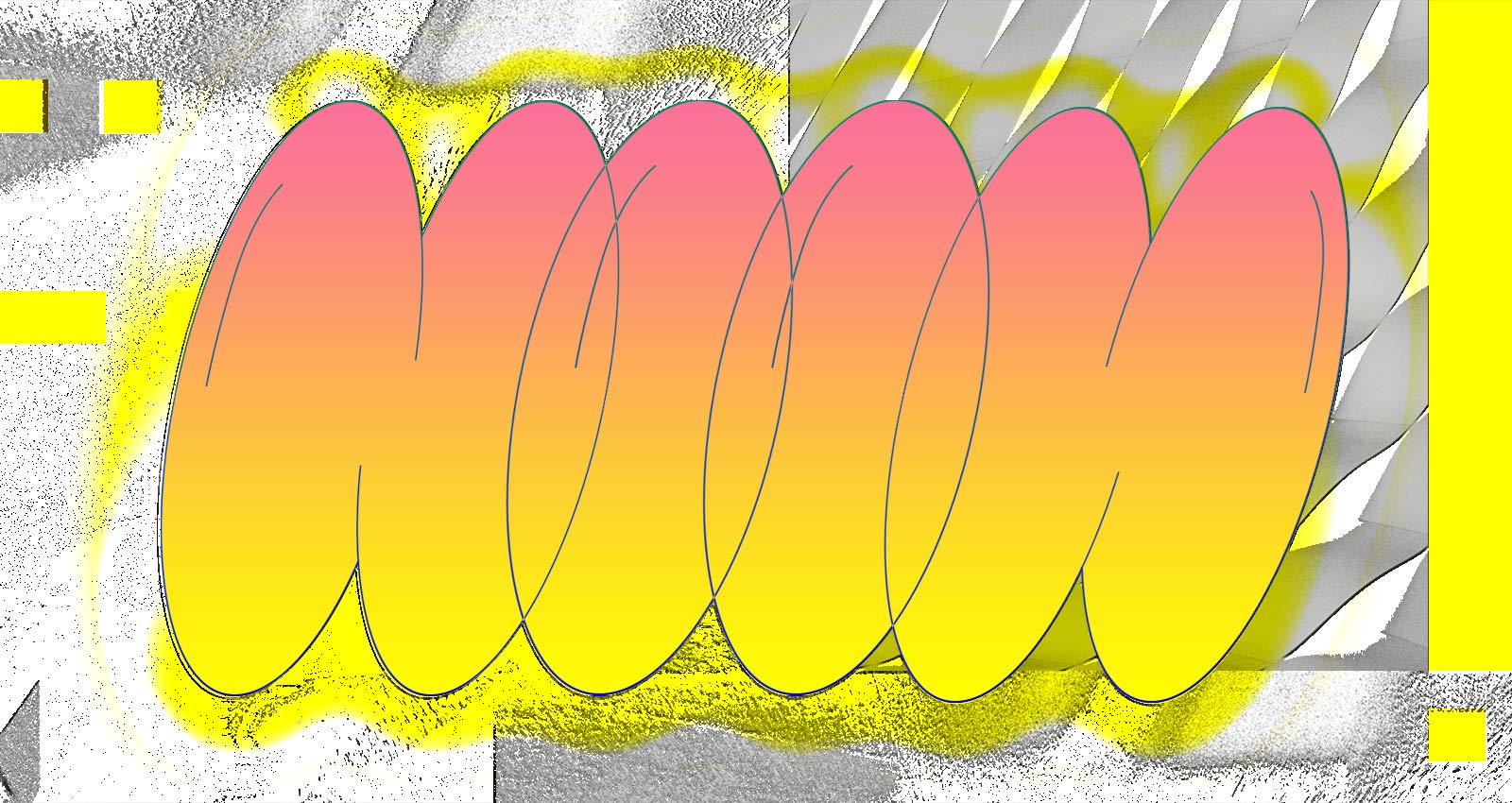
The definition of “trip-hop” is a slippery one; even one of the genre’s pioneers has trouble pinning it down. “Essentially, it needs to have a down-tempo beat, to be hypnotic and narcotic to an extent—that chilled-out, slowed down feeling,” says Sneaker Pimps ’s Liam Howe, whose album Becoming X was one of the genre’s foundational LPs. “It also has to have a little bit of dub, a bit of funk, soul, and jazz. We put quite a lot of guitars and folk music into it as well, and if you push genres like hip-hop and jazz as far as they can go, then you come up with a new amalgamation of sound.”

That “new amalgamation of sound” first began taking shape in the early ‘90s. Massive Attack’s 1991 album Blue Lines is considered the origin point of the genre, a blueprint for how to blend hip-hop, synth, and dub into a commercial product. Portishead’s Dummy arrived three years later, and immediately became the dinner party album for the cool set, introducing the world to the gorgeous, ghostly vocals of Beth Gibbons. Now, some 20 years later, traces of the genre can be heard in the music of FKA Twigs, serpentwithfeet , Arca , and the xx, and the Sneaker Pimps themselves have ended a two-decade hiatus, returning with their fourth studio album, Squaring the Circle . And though it’s primarily associated with the UK, these days there are more than a few notable international acts mining trip-hop to inform their own sound.
These are just a few of the new faces of trip-hop.
Sneaker Pimps Becoming X

The Sneaker Pimps’s most iconic album, Becoming X, helped to solidify the UK trip-hop sound. Released in 1996, the album featured the seductive croon of Kelli Ali , and breakout hits “6 Underground” and “Spin Spin Sugar” combined dreamy electronica beats with crackling vinyl samples and layers of acoustic guitar and keyboards. Ali departed after this album, but founding members Chris Corner and Liam Howe pressed on, with Corner assuming vocal duties on the two albums that followed.
“When we were starting to make music in the early ‘90s, we were making instrumental dance music, and there was a similar scene in London,” says Howe, who in addition to his role in Sneaker Pimps has also produced tracks for Lana Del Rey , FKA Twigs, and Marina and the Diamonds . “We were about three-quarters of the way through writing Becoming X when Portishead’s Dummy came out, and that’s when the defining term ‘trip-hop’ landed. We used to call it ‘head music’ before that.” As its title suggests, the group’s fourth album Squaring the Circle is a return to their musical beginnings. “The new album has one foot in that ‘90s trip-hop era, because that’s part of our DNA, [but it’s also] a mixture of Becoming X, Splinter, and Blood Sport . It’s the same band, doing the same thing that we always did.”
Kelli Ali Ghostdriver

Former lead singer of Sneaker Pimps, Kelli Ali’s most recent album is the soundtrack to the film Ghostdriver (2021), which she wrote, produced, and directed. It’s a glimmering, romantic beast of a record, full of skittering percussion, operatic harmonies, and gothic melodrama; songs like “Fade To Black” and “Waiting For Grace” are sweetly melancholy, and the tone is appropriately cinematic throughout, employing both jazzy brass and, on tracks like “The Fear of London,” video game-style synths. Howe contributed extensively to the mix and production, a throwback to their days working together in Sneaker Pimps. “I’ve always kept in touch with Kelli, she’s lovely,” he says. “She’s got fantastic character to her voice—it’s perfect for a soundtrack. In trip-hop, there was so much influence from ‘60s and ‘70s film soundtracks, and that noir, cinematic sound is a great fit for her voice.”
Sevdaliza Shabrang

Netherlands-based Sevdaliza channels her experiences as an Iranian-Dutch woman into trip-hop tracks that are both political and personal. Born in Tehran, Sevdaliza has used her music and her public presence to address prejudice against Muslims in Western countries. Her 2017 track “ Bebin ” protested the ban on Muslims entering the U.S .; it was the first song she’d performed entirely in Persian. Her 2020 album Shabrang (a Farsi phrase that loosely translates to mean “night color”), is both malevolent and powerfully feminine. Bone-chilling strings, snarling beats, and futuristic urban club sounds lay the groundwork for her compelling voice. She sounds bereft on Farsi ballad “Gole Bi Goldoon,” fierce on “Darkest Hour,” and vulnerable over the slow clash of piano and softly clattering drums on “All Rivers At Once.”
Pale Spring CYGNUS

Los Angeles’s Emily Harper Scott and her partner and co-producer Drew Scott make the sort of fuzzy, spacious electronica that invites listeners to disappear inside the warmth of their sound. CYGNUS , released in 2019, is a showcase for Harper’s dexterous range, and her instincts for when to dial up the vocal dramatics and when to leave just aching silence. Her improvisational approach to songwriting on CYGNUS has roots in jazz and R&B—though the glitchy beats, gothic instrumentals, and surreal atmosphere are all signature trip-hop.
A/T/O/S waterman
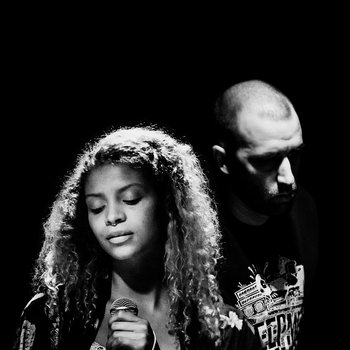
The Belgian duo A Taste Of Struggle (A/T/O/S ) met in 2012 and released their self-titled debut two years later, but it’s last year’s waterman that serves as the ideal introduction to their sound. The pair’s blend of hip-hop, dub, and R&B frequently recalls Massive Attack; on tracks like the slow-simmering “connect the signs,” Amos’s R&B-inspired vocals perfectly complement the boxy beats and dub-like bass of producer Truenoys, while songs like “are you in love” have the moodiness of dubstep, reflecting the duo’s “old-meets-new” approach to trip-hop.
Dolphin Midwives Body Of Water
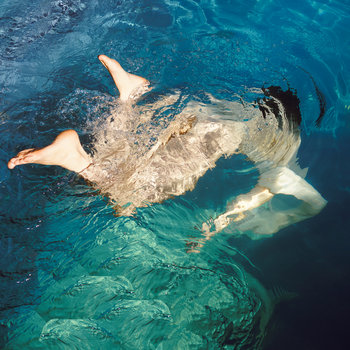
The music of Portland artist Sage Fisher, who records as Dolphin Midwives , is soulful, wistful, and romantic. Her latest album, Body of Water is aptly named—there’s something oceanic and fluid about its songs. On “Clearing,” vocal harmonies are layered over a steady synthetic heartbeat rhythm; “Bloom” is anchored by Fisher’s operatic vocals, synths unfolding slowly all around her. Fisher’s music has served as the soundtrack for dance and sound installations in art galleries and at festivals. Fittingly, Body of Water is the kind of multi-layered record that invites multiple interpretations.
Public Memory Wuthering Drum
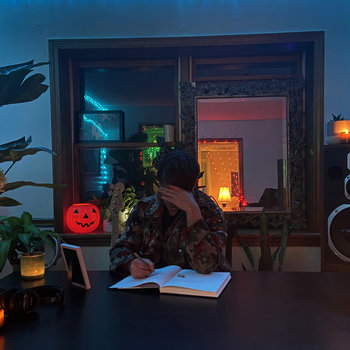
Like its cover art, the sound on Public Memory ‘s 2016 LP Wuthering Drum is distorted and strange, but beautiful. On “Ringleader,” murky, malevolent synths sizzle over a somnambulant beat. On “Domino” and “Lunar,” Robert Toher’s vocals duck in and out of the layered strings, bells, and vintage video game sounds. The effect is both haunting and peaceful at once. Though Toher sings of isolation and loneliness, there’s something lovely in the consistent tone and pace of the tracks that seeks to connect and remain alive.
Time For Dreams Life of the Inhabitant

Time For Dreams are the Melbourne-based duo of Amanda Roff and Tom Carlyon, and their darkly humorous single “Death to All Actors” epitomizes their gothic, playful attitude. Sweeping synths and crackling percussion create a foreboding atmosphere, but they’re countered by warm atmospherics. Recorded in the cold environs of Mount Macedon, the album has a pervasive sense of haunted, unexplored space. It’s an album full of beautiful contradictions, pitting the organic sound of the human voice against synthetic arrangements, mirroring the natural push-and-pull of human existence.
Electronic Read more in Electronic →
Top Stories

Latest see all stories

On Bandcamp Radio see all

- terms of use
- acceptable use & moderation
- switch to mobile view
Referral code for up to $80 off applied at checkout
The 10 Best Trip-Hop Albums To Own On Vinyl
Back in the early ’90s, the seeds of a new strain of music that blended together hip-hop, jazz and electronic influences started to sprout. Tagged trip-hop—a phrase reputedly coined by a writer at Mixmag magazine—the vibe was all about atmospheric (and often instrumental) beats that embraced a languid, laid-back vibe that, as the cliché goes, was often used as background music to smoke sessions. Over this blunted base, producers layered in psychedelic flourishes and introspective vocals. At the height of the trip-hop movement, labels like Mo’ Wax and Ninja Tune helped bring together British beat makers with open-minded American rappers in the pursuit of stylish mood music—and it’s a fusion that caught the mainstream’s attention through crossover albums by the Bristol-based bunch of Massive Attack, Portishead and Tricky.
Two decades on from trip-hop’s peak, here’s a salute to 10 cornerstone albums deserving of a place in your collection.
Only Available at VMP
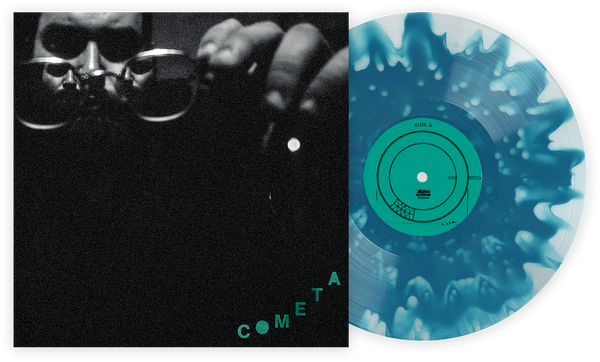
Get These Records from VMP Now
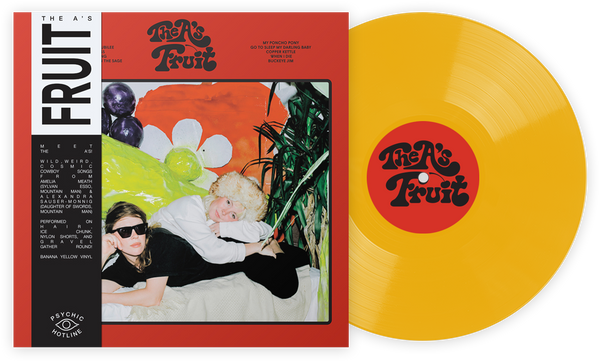
# Massive Attack: Blue Lines
For many listeners, Massive Attack's debut album is synonymous with "Unfinished Sympathy"—a bittersweet relationship confessional fleshed out with orchestral strings—but you can also make the persuasive argument that the rest of Blue Lines was a case of 3D, Mushroom and Daddy G laying down a formative trip-hop template. It's a blueprint spawned from British soundsystem culture—"English upbringing, background Caribbean," as Tricky, the group's de facto fourth member, puts it—and at times, songs like "Lately" and the title track sound like they're being broadcast live from the dance as classic hip-hop breaks are cut up and topped with the hushed raps of the crew, Shara Nelson's impassioned singing and roots reggae man Horace Andy's angelic lilt. Back in 1991, you'd find a copy of Blue Lines in constant rotation inside any self-respecting Sony Boodo Khan.

#Various Artists: Headz
You can't talk about trip-hop without mentioning the importance of James Lavelle's Mo’ Wax label—and 1994’s Headz compilation hit home as an indicator of where the sub-genre was going. The expansive project's subtitle alone is a solid summation of the movement’s ambit: "A Soundtrack Of Experimental Beathead Jams." Fittingly, what unfurls over a lavish triple vinyl set—which is fronted by abstract artwork courtesy of Massive Attack's 3D — is all about ambient downtempo beat work: La Funk Mob's "Ravers Suck Our Sound" and Howie B's "Head West—Gun Fight At The O.K. Corral" are cinematic outings that toy with dub overtones, while DJ Shadow's "In/Flux (Alternative Interlude 93)" is a nostalgia-tinged, beat-shifting coda that closes out the set. A second installment in the series dropped two years later and upped the ante to include artists like Air, Tortoise and DJ Krush, but the first Headz collection is the pivotal anchor of the trip-hop scene.
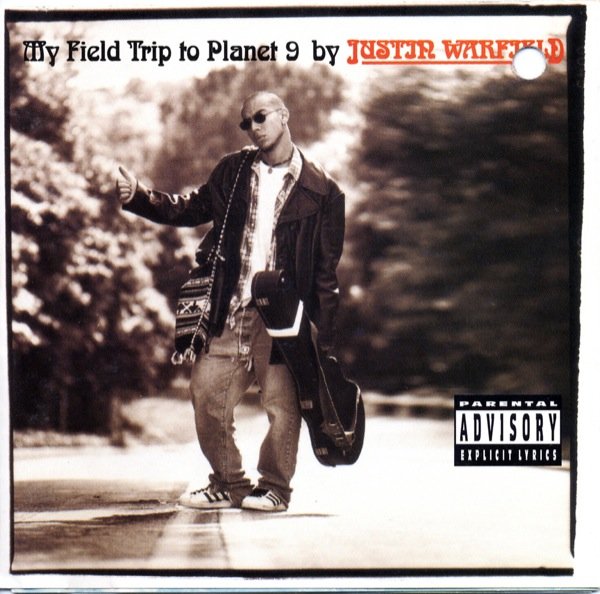
# Justin Warfield: My Field Trip To Planet 9 Back in 1993, hip-hop fans were either on board Dr. Dre and Snoop Dogg's slick G-funk ride or pledging their allegiance to the Wu-Tang Clan's rugged and raw Shaolin styles. Justin Warfield, on the other hand, could be found releasing far-out experimental rap music that was usually tagged as being like hip-hop on acid—a claim uncontested by songs like "Drugstore Cowboy" where the protagonist cops to the substance being "my favorite pastime" before realizing "the room starts looking like a clamshell deep beneath the sea." Musically, producers Prince Paul and QDIII roll out a shapeshifting bed of beats for Warfield's leftfield lyricism. "Thoughts In The Buttermilk" also features guest guitar lines from producer and engineer Scotty Hard, whose own group, New Kingdom, can also make an early claim for being trip-hop pioneers of a sort, complete with MC Nosaj going on to record with Tricky and Morcheeba.
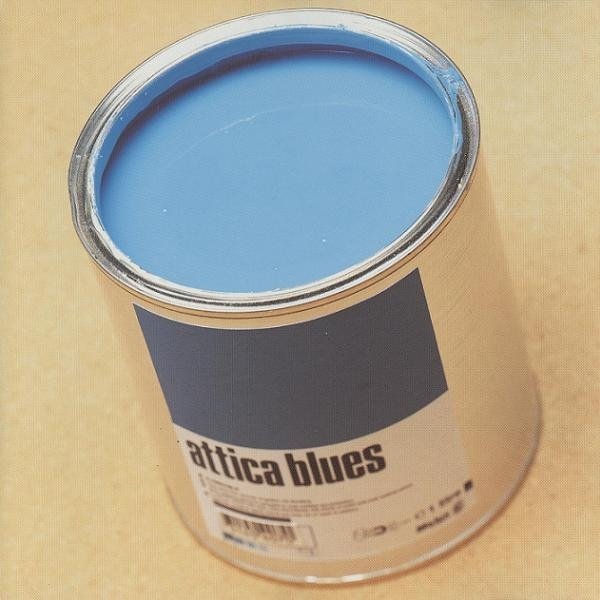
#Attica Blues: Attica Blues After jazz record dealers questioned Tony Dark's ability to pay for a copy of saxophonist Archie Shepp's 1972 release Attica Blues , the producer struck back by naming his band after the album. Consisting of fellow beatsmith Tony Nwachukwu and vocalist Roba, the London-based trio found a home for their melodramatic and brooding sound on the Mo’ Wax label. 1997's eponymously titled debut album is a moving collection of songs that showcase Roba's royal vocals as she trills through tracks about self-doubt, lost love, and even world history. This goes down over expansive production that fuses jazz samples with elaborate strings to create a dramatic and haunting listening experience that also nods to the two producers' African heritage. "It doesn't cost anything to be yourself / Wealth has no value when you're dealing with yourself," sings Roba on the melancholic "R.E.A.L. Expense” as she helps turn Attica Blues into a trip-hop album with true soul.
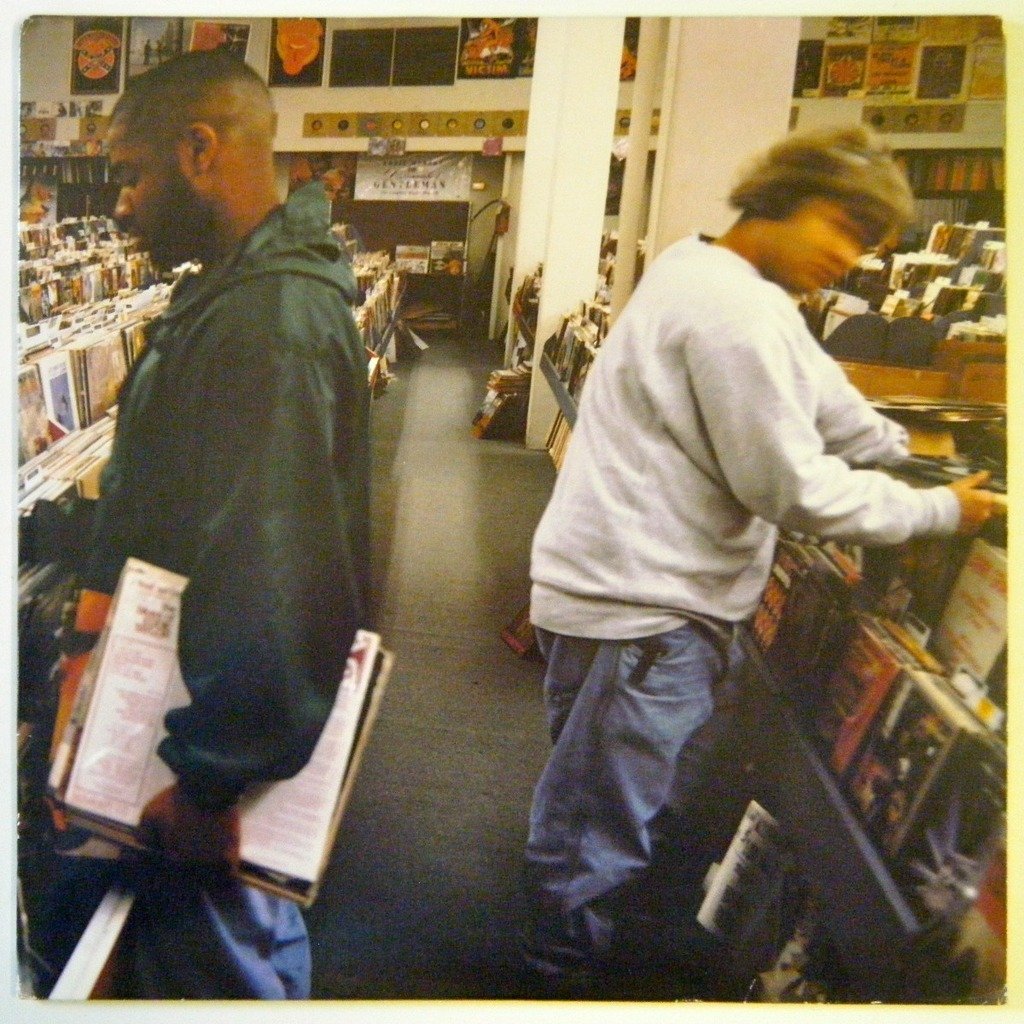
# DJ Shadow: Endtroducing….. For die-hard hip-hop heads, 1996’s Endtroducing..... hit home like a logical update of Steinski and Double Dee's innovative cut-and-paste sample collages from the ’80s—but DJ Shadow's debut album wound up taking on a fresh life as a figurehead release for both the Mo’ Wax label and the trip-hop movement as a whole. Clocking in at just over an hour in length, the project is a highly nuanced demonstration of the art of crate digging and sampling, with the San Jose native conjuring up dreamy soundscapes and moving the narrative along via select vocal samples and scratches. It all amounts to an intoxicating ode to the joy of record collecting.

# Tricky: Maxinquaye At times, trip-hop has been stigmatized as little more than stylish background music, but with his debut solo album Tricky showed that the sub-genre can command the ear and touch the heart. Named after his mother (Maxin Quaye) and recorded in cahoots with his then-girlfriend Martina Topley-Bird (whom he allegedly stumbled across one day when she was cutting class), Maxinquaye features Tricky Kid airing out the same sort of abstract, weed-enhanced, freewheelin’ lyrics he debuted on Massive Attack's Blue Lines . "MTV moves too fast/I refuse to understand / You go your way and I'll see mine / Feels like wasted time," he drawls on the woozy, aquatic "Pumpkin," before coating the rest of the experience in a dark leftfield patina that reaches a zenith with a cover of Public Enemy’s “Black Steel In The Hour Of Chaos.”
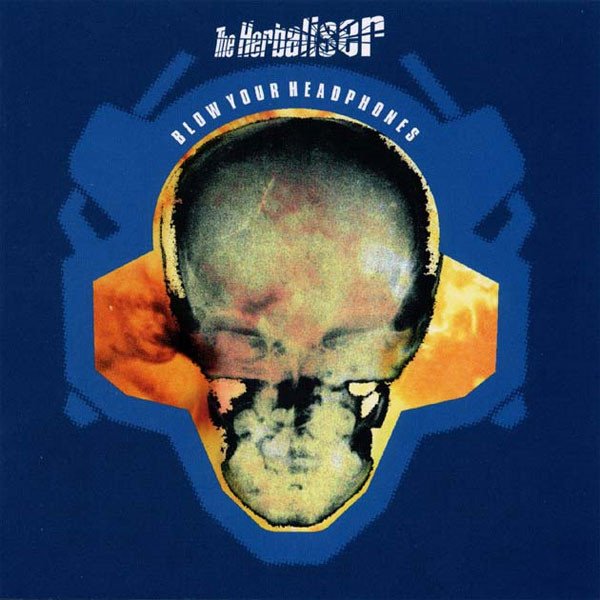
# Herbaliser: Blow Your Headphones Trip-hop has a staunch British heartbeat, but its finest practitioners have always reached out to the U.S. when it comes to adding a little vocal rap flair to their tracks. Dropping on Cold Cut's Ninja Tune label, producers Ollie Teeba and Jake Wherry's second long-player jolts into life with "Opening Credits," where crisply scratched in vocal grabs from Run-DMC and Onyx announce that things are about to get "live like a wire." After that, Jean Grae (appearing under her former MC moniker of What? What? from the group Natural Resource) makes the first of four guest spots on "The Blend" and proceeds to drop buttery flows all over the taut track. When Blow Your Headphones settles back into instrumental territory, it becomes defined by jazz-inspired grooves and a tangible ’60s spy movie soundtrack vibe.
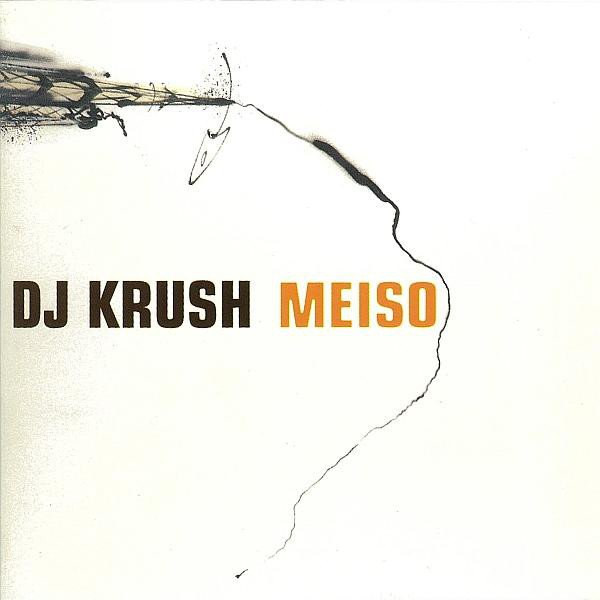
# DJ Krush: Meiso Another essential release from the Mo’ Wax stable, Japanese turntablist DJ Krush's third solo studio album underscored the links between the trip-hop and hip-hop scenes in the ’90s by calling on features from CL Smooth, The Roots' MCs Black Thought and Malik B, and Gang Starr Foundation soldiers Guru and Big Shug. Beyond the guest spitters, the rest of Meiso rolls out as a masterclass in turning sampled breaks into stripped down but atmospheric beatscapes, with songs like "Anticipation" gently teasing the listener into a zen zone. Throw in minimalist cover artwork by graffiti icon Futura 2000 and you’ve got a true trip-hop collector’s centre piece.
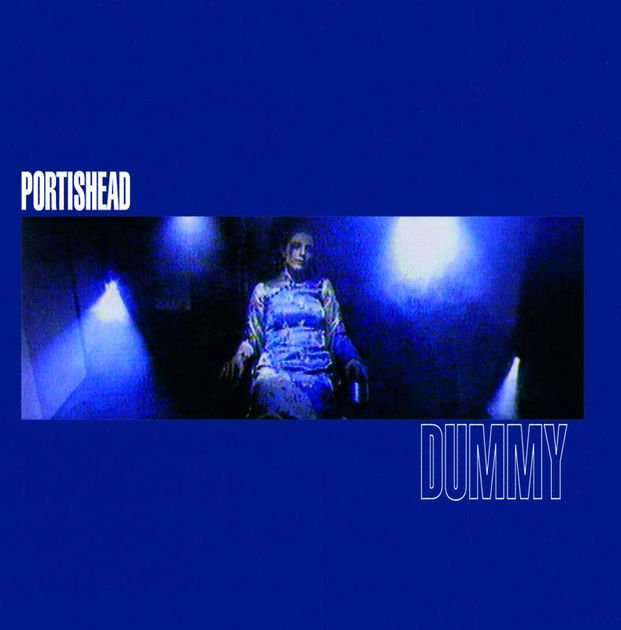
# Portishead: Dummy The highlights of Portishead's 1994 debut album are now firmly enshrined in pop culture: "Sour Times" is like a spaghetti western soundtrack flipped into an off-kilter ballad, "Roads" is fueled by one of the all-time haunting keyboard lines and "Glory Box" became the background to an entire generation's moody student days. But the essence of Dummy is about a cultured record collector—Geoff Barrow—turning a crate digger's encyclopedic knowledge into an emotionally dripping album experience by virtue of calling on the assistance of a singer, Beth Gibbons, who’s blessed with an astounding ability to convey sad and wounded lyrical sentiments. Consider Dummy an evocative example of letting the song cry.
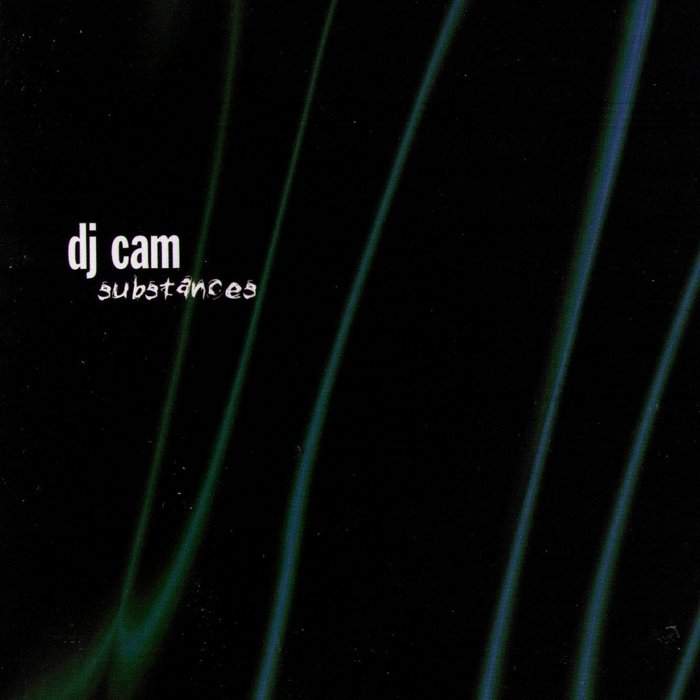
#DJ Cam: Substances Parisian mood master DJ Cam was lavished with critical praise for 1995's Underground Vibes , but the following year's Substances is the project that resonates most ethereally. Openly showcasing his hip-hop and jazz influences, songs like the delicate and airy, piano-helmed "Friends And Enemies" seamlessly samples Gang Starr and John Coltrane, while the rolling, harp-spiked "Innervisions" mines from a similar stash of sounds as it fuses Nas’ old spar AZ with Alice Coltrane. But don’t think this is some awkward mash-up experiment—in DJ Cam's nuanced hands, Substances resonates as a poignant musical journey that salutes hip-hop pioneers and jazz cats in a tender and respectful manner.
- the 10 best

Phillip Mlynar writes about the holy trinity of rappers, cats and food. He once got drunk on pints of black and tans with MF Doom in the name of journalism.
Join the Club!
Records of the Month VMP Store Exclusives Pre-Orders Ready to Ship Vinyl Me, Parton
R&B / Hip-Hop Soul Rock Jazz Country
Collections
Best Sellers Bundles Anthology $30 & Under Represses
${ product.title }
${ product.vendor }, quality music. delivered to your inbox..
Sign up to receive new vinyl release notifications, curated playlists, Magazine articles, and more.
Shopping Cart
Exclusive 40% off for students , military members & healthcare professionals – get verified.
- ${ option.name }: ${ option.value }
Your cart is currently empty.
Similar Records
Other customers bought.
Shipping & taxes calculated at checkout
${ accountModal.title }
Referral discount will be applied at checkout
Join the club
Select a location.
- United States
- International
Choose a Term
Commit longer and save. Or, choose Monthly for no commitment. We’ll never renew your membership without contacting you first. You can change your Track or Swap your future monthly records.

Shipping begins in April. Sign up today to secure your spot on this once-in-a-lifetime musical journey. Start your subscription with "${chargebee.selectedPlan.product.title}".
Start your subscription with "${chargebee.selectedplan.product.title}"..
Available in Limited Engagements of 3, 6, or 12 month terms. Commit longer to save. This Limited Subscription Track will end after 12 months and you will no longer be charged.
This Limited Subscription Track will end in March 2024 and you will no longer be charged. Commit longer and save. Start with this month's Dolly Parton Record, with the option to include catch-up records from the previous months upon signup.
Forgot password?
Create An Account
Create a free VMP account to save this product to your wishlist.
Already have an Account? Sign In
Unsupported Browser
Your web browser appears to be outdated. Our website may not look and function quite right in it.
Please consider updating your browser to enjoy an optimal experience.
Make Your Order a Gift
Want to send this order as a gift? Enter their shipping information, plus an optional note (that will be included in their box) and we’ll take care of the rest. Note: On the next screens, you will be directed to still enter your own shipping information for billing and account purposes, but the order will still ship to your recipient.
Sign Up To Be Notified
by will be the Record of the Month. Enter your email to be notified when this album launches.
Join Waitlist
This product is currently unavailable. We'll add you to the waitlist and notify you if it becomes available.

10 Essential Trip-Hop Albums

Last month, Treble explored the greatest albums in hip-hop released in the 1990s . It was a great exercise in being immersed in the beat-heavy sounds of the era, but it also inspired us to do a post-script of sorts on the outgrowth of hip-hop that happened in the Bristol club scene in the UK. Using hip-hop beats as a foundation for darker, late-night grooves and smoky atmosphere, trip-hop created a fascinating fusion. As the genre celebrates its 25th anniversary (assuming you count Massive Attack’s “ Any Love ” as the first real trip-hop release, which we suppose is debatable), we assembled our list of 10 of the best trip hop albums. Because nobody loves us — not like you do.

Portishead – Dummy
(1994; Go! Discs/London)
This is not the beginning of trip-hop — that arguably started back in 1988 when Massive Attack released their debut single. But it wasn’t until around 1994 that the phrase began to make the rounds outside of its incubating scene in Bristol, UK, and began to circulate in the U.S. and beyond. And it’s thanks in large part to Dummy , the breathtaking debut album by Portishead. Named for a small English town, Portishead took a hazy, dark approach to pop music, blending crackly hip-hop beats with sparse guitar licks, noir film samples and a fetish for John Barry. Dummy became a cult hit on the strength of gorgeous, catchy singles like “Sour Times” and “ Glory Box ,” though between those tracks, the group stuffed in moments of soul balladry, heavy-hitting boom-bap beats and swampy, psychedelic dirges. At the time it was completely alien and strange, but compelling in spite of the weirdness that characterized it. That didn’t last — within a few years, everyone would come to copy the Portishead template, diluting it a little each time until it lost its intrigue. Even Portishead lost interest; in 2008, the release of the fucked-up, paranoid sounding Third represented a huge transition for the band, revealing once again that Geoff Barrow, Beth Gibbons & Co. are about innovation above all. – JT
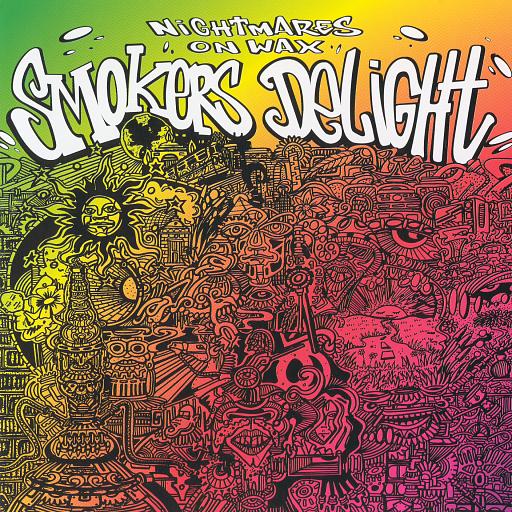
Nightmares on Wax – Smoker’s Delight
(1995; Warp)
After releasing an album on then-fledgling label Warp Records in 1991, Nightmares on Wax founder George Evelyn stepped away to run a dance club in Leeds, DJ, and start his own record label. The context is important because unlike many of the other notable trip-hop releases, Smokers Delight has a distinct DJ feel to it, with an aesthetic that relies on multiple melodies being seamlessly layered on top of each other throughout the course of a song. The transitions between movements are always fluid as new pieces are pulled into the picture by a crossfader that moves at a snail’s pace. Take for instance the opening track, “ Nights Introlude ,” which weaves in a “Summer In The City” sample — the one made popular by Pharcyde’s “Passin’ Me By” — after already establishing a perfectly fine high hat and string-based groove. Evelyn clearly has a fine ear for samples and uses them tastefully but frequently to extremely satisfying ends. Smoker’s Delight has aged surprising well over the years; for all of the styles that Evelyn touches on throughout the record from hip hop to funk to dub, there’s a unifying coherence that’s the true litmus test of a master DJ — a quality that’s difficult to map when done well but easy to spot when botched.- DG
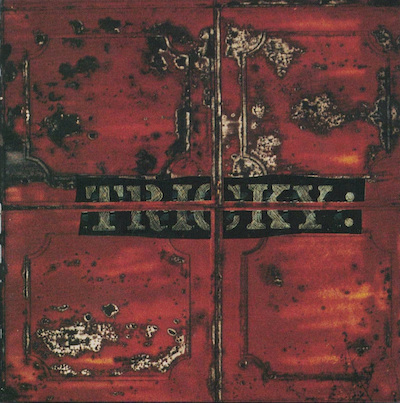
Tricky – Maxinquaye
(1995; Island)
When Tricky left Massive Attack after Blue Lines , there were questions about how he would respond to the challenge of establishing himself as a solo artist. With Maxinquaye , one of the most prodigious debuts of the past three decades, Tricky put those questions to rest with one fell swoop. As enthralling and bold as Blue Lines is, Maxinquaye arguably transcends it with greater scope, ambition, and passion (the album is named after Tricky’s mother, who committed suicide). One can simply play any of the tracks on the album to test this assertion; from the bony rattle of “ Ponderosa ” — which brilliantly samples Shakespeare’s Sister — to “Abbaon Fat Tracks,” a distorted sex ballad, to the languidly gorgeous closer “Feed Me,” Maxinquaye passes every time. Truthfully, its only downside to speak of is that it set the bar too high for Tricky, who hasn’t quite been able to match its brilliance again. Bad for Tricky, good for all of us. – CB
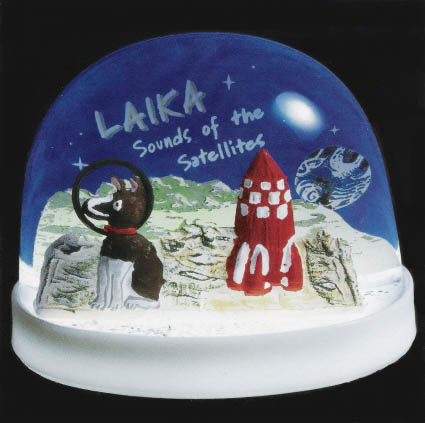
Laika – Sounds of the Satellites
(1997; Sire)
Formed by former Moonshake vocalist Margaret Fiedler and producer/engineer Guy Fixsen, Laika took trip-hop to weird new places. Though the duo used beats and grooves in much the same way that Portishead or Massive Attack did, their manic, polyrhythmic arrangements were far more complex and weird than the club crowd might have been ready for. The lead single from Sound of the Satellites , “ Prairie Dog ,” slinks along a dub-inspired 7/4 rhythm, and the frantic pace of tracks like “Poor Gal” feel more like Rema in In Light -era Talking Heads or Metal Box -era Public Image Limited than anything happening in Bristol. This is intense, but fun stuff, and maybe not the most traditional of trip-hop records, but definitely one of the best.
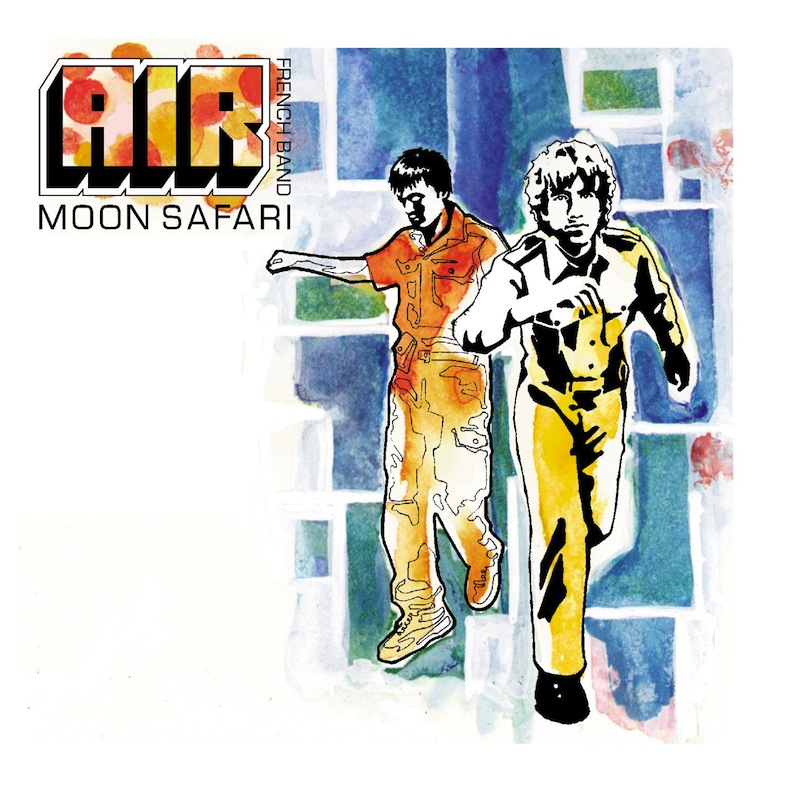
Air – Moon Safari
(1998; Source/Caroline)
Air may not fit the British, café lounge archetype that’s associated with a majority of popular trip-hop acts, but the French duo’s first full-length expands on all of the genre’s chill-out aims. Guest vocalist Beth Hirsch contributes to what would become one of Air’s all-time most popular songs, “All I Need”, as well as another album highlight, “You Make It Easy.” Believers in warm introductions and kind goodbyes, Nicolas Godin and Jean-Benoît Dunckel put their two most languid and spacey tracks at the front and back of Moon Safari . Starting things off is “ La Femme D’Argent ,” an instrumental that stays tethered to a thick-stringed, yet subtle bassline, but stretches out with spiraling arpeggios, spunky synth keys and refreshingly human hand claps. Moon Safari isn’t so much an album you stop listening to as it is a kind of dream you wake up from; the exact events from the experience are a hazy memory but the color of the ride leaves a vivid, pleasant impression. – DG
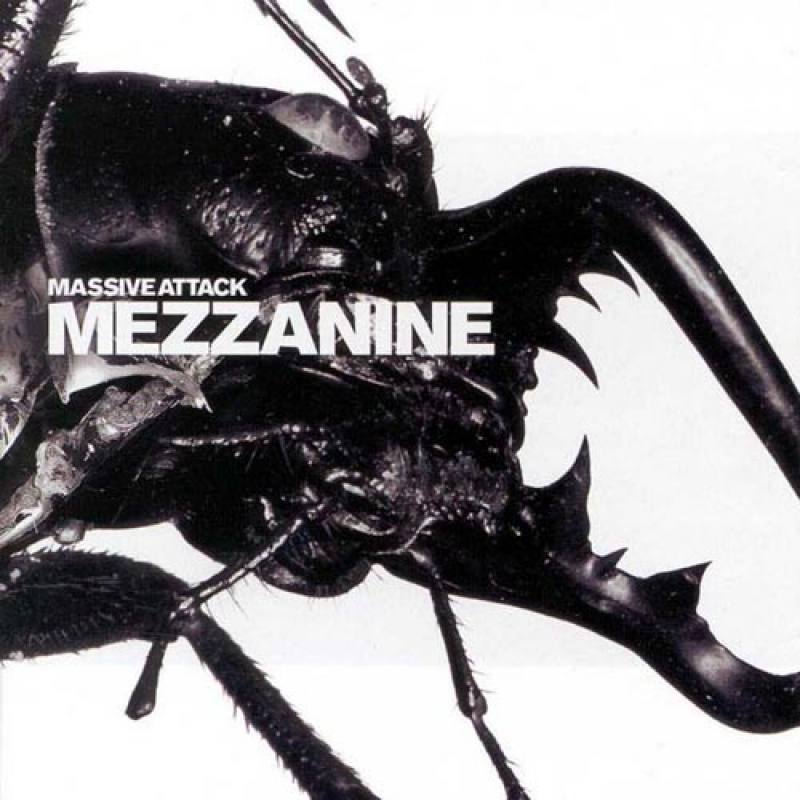
Massive Attack – Mezzanine
(1998; Virgin)
Most groups that emerged during the trip-hop era weren’t terribly prolific, and by 1998, a second wave of tepid coffeehouse trip-hop had become the sleepy norm. Having released their last album Protection in 1994, Bristol’s Massive Attack at this point weren’t front and center in the conversation in the same way that Portishead was before taking an extended break, or with the bright flicker that artists like Esthero and Hooverphonic would briefly enjoy. But in the summer of 1998, Massive Attack not only returned, they did so with their best album yet, a dark, sinister head-trip of an album that crept slowly and hit with lethal force. Mezzanine found Massive Attack entering a dark phase in their career, which hasn’t really ever ended, though this is the moment where it’s most potent. The eerie lurch of “Angel,” the stoned dub-funk of “Risingson,” or the evil pulse of “Inertia Creeps” — it amounts to an album by a group seemingly no longer interested in the more positive aspects of club music, as Blue Lines suggested. This is its sweaty, grimy, scraped-up, paranoid, sleazy and possibly even dead underbelly. – JT
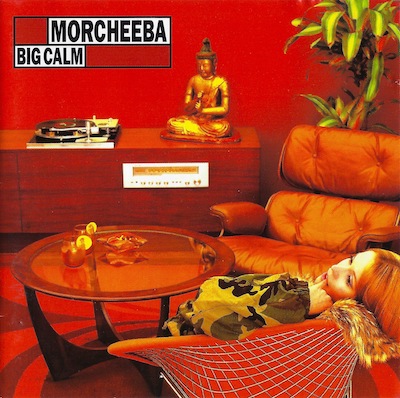
Morcheeba – Big Calm
(1998; Sire)
Some parts of Morcheeba’s sophomore LP, Big Calm , have not aged well. The background DJ scratching on “Blindfold” feels forced and awkward, “The Music That We Hear” is an unnecessary pop rework of a debut album stand-out (“Moog Island”), and I can practically smell the incense when the sitar comes in on “Shoulder Holster.” Those few awkward elements aside, Big Calm is held up on the merits of a few choice tracks, namely lead single “The Sea,” “Let Me See” and “Over and Over.” Singer Skye Edwards’ relaxed coolness gives each song a degree of levity without ever dropping the sultry edge. It’s a fine line to tip-toe and Edwards always stays a few short steps in front, enticing the listener with the promise of satisfying hooks that come when expected. From the loud bounce of “Let Me See” to the sparse “Over and Over” Edwards has the right balance of tranquility and sexuality to keep heart rates low and attention high. – DG
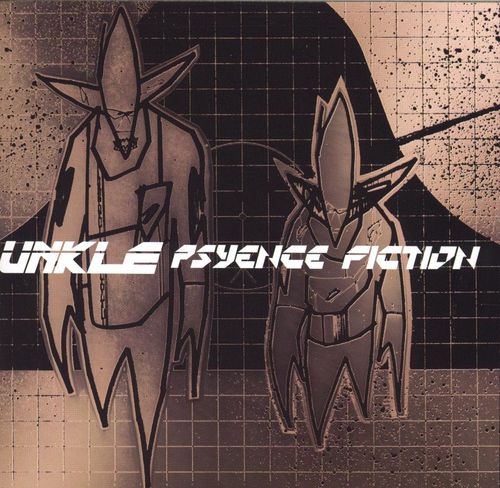
UNKLE – Psyence Fiction
(1998; Mo’ Wax)
For me, as it was with likely most listeners who picked up Psyence Fiction , the big sell was a collaboration between DJ Shadow and Thom Yorke. In the late ’90s, there was no more glorious dream collaboration, Yorke’s vulnerable vocal performance on “ Rabbit In Your Headlights ” matched perfectly by James Lavelle and Josh Davis’ chilly sample arrangement. However, it was just one of many interesting stylistic detours on an album that used trip-hop as a foundation for even bolder experiments. The Verve’s Richard Ashcroft lent his vocals to the epic, string-laden “Lonely Soul,” Mike D and Metallica’s Jason Newstead teamed up on the scrappy hip-hop of “The Knock,” and the then-unknown Badly Drawn Boy helmed the harder rocking “Nursery Rhyme.” Yet the instrumentals dazzled as well, like the gorgeously psychedelic “Unreal,” which was later released in an alternate version with vocals from The Stone Roses’ Ian Brown. It was all very lush and gorgeous, but should anyone get the wrong impression, that UNKLE had no sense of humor, segue “Getting Ahead in the Lucrative Field of Artist Management” dedicated its 54 seconds to a hilarious commercial for a board game called “Ball Buster.” (Snicker…) – JT
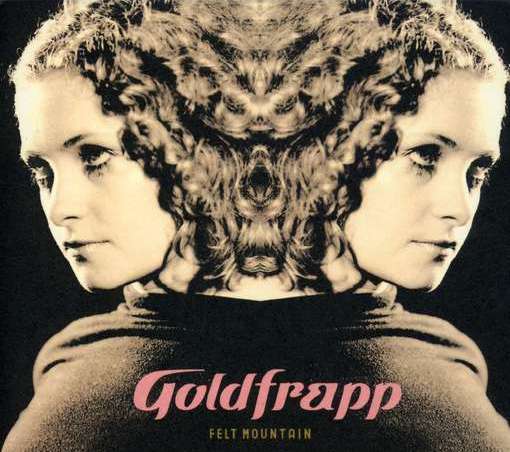
Goldfrapp – Felt Mountain
(2000; Mute)
In the 13 years that have lapsed since Goldfrapp first made their debut with Felt Mountain , they’ve taken many a stylistic detour, from trashy electro on Black Cherry , to beat-driven glam-pop on Supernature , psych-folk on Seventh Tree , and inexplicably upbeat new wave on Head First . And generally speaking, Alison Goldfrapp and Will Gregory do a bang-up job each time they switch up the formula. Yet their debut follows a trip-hop aesthetic in much the same way that Portishead laid it out, with sexy, dark soundscapes that blend the string-laden grandeur of John Barry’s Bond themes with the eccentric folk touch of Lee Hazelwood. It’s one of the group’s most stunning albums altogether, from the sultry shuffle of “Lovely Head” to the lush orchestration of “Pilots.” Whether or not you prefer Goldfrapp in sequins, spandex, furs or forests, it’s hard to argue that Felt Mountain isn’t one hell of an album. – JT
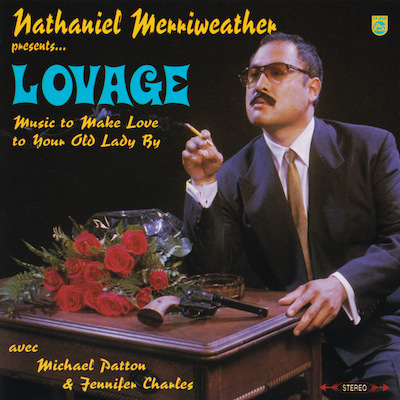
Nathaniel Merriweather presents… Lovage – Music to Make Love to Your Old Lady By
(2001; 75 Ark)
In 2001, under his “Nathanial Meriweather” moniker, Dan The Automator produced a trip-hop album featuring Jennifer Charles (of Elysian Fields) and Mike Patton (of Faith No More, Tomahawk and Mr. Bungle) on vocals. The mixes on Music to Make Love to Your Old Lady By featured Kid Koala on turntables, as well as a couple other Deltron 3030 collaborators. The album paid tribute to Alfred Hitchcock, Serge Gainsbourg, and new wave rockers Berlin. If all that doesn’t convince you to listen to this smooth hour of turntable-heavy trip-hop, I don’t know what will. – AK
No becoming X = fail list
Becoming X was nowhere near good enough to be in any ‘Best of’ list. Kelli Dayton’s voice was never in teh same league as her compatriots.
Where is esbe? He’s in the top ten in my book.
Becomimg x, fuck no lol
Leave a Reply Cancel reply
Your email address will not be published.
Save my name, email, and website in this browser for the next time I comment.
Massive Attack, Young Fathers, Fontaines D.C. releasing EP to benefit Gaza relief efforts
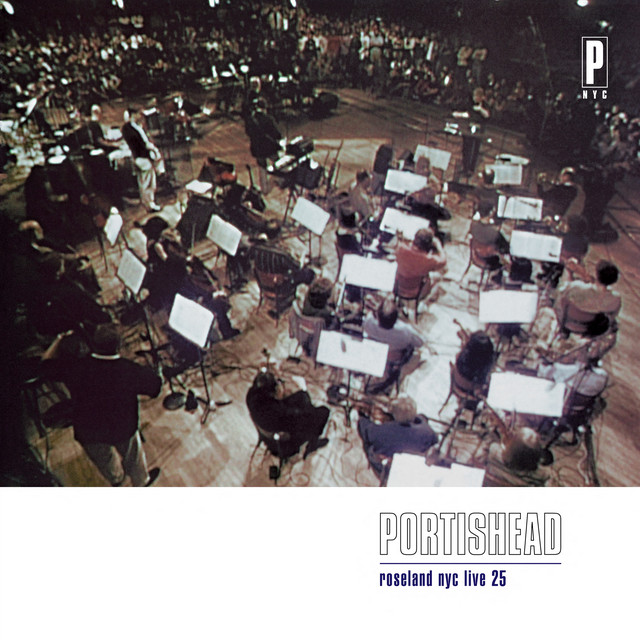
Portishead release remastered, expanded Roseland NYC Live for 25th anniversary

Nightmare Soundtracks: 25 Terrifying Albums

Every Treble Album of the Year Ranked

91 Essential Alternative Rock Albums of the ’90s

Treble 100: No. 68, Massive Attack – Mezzanine
- Album Reviews
- City Guides
© 2024 Treble Media. All Rights Reserved.
- Genre Finder
Genre: trip hop
Trip hop is a subgenre of electronic music that emerged in the 1990s. It is characterized by its downtempo beats, atmospheric textures, and use of samples from various genres such as jazz, soul, and hip hop. The genre often features haunting vocals and introspective lyrics, creating a moody and introspective atmosphere. Trip hop has been described as a fusion of hip hop and electronica, with influences from dub, reggae, and ambient music. It has been popularized by artists such as FKA twigs, Bonobo, and Massive Attack.
- Artists List
Most popular trip hop artists

Related genres
- electronica
- jazztronica
- indietronica
- intelligent dance music
- neo-synthpop
- instrumental hip hop
- turntablism
- electro jazz
- alternative dance
- swedish electropop
- livetronica
- alternative rock
- folktronica
- classic progressive house
- ambient pop
- icelandic pop
- drum and bass
- gothenburg indie
- swedish synthpop
- icelandic experimental
- atmospheric dnb
- latin alternative
- electro swing
- nu skool breaks
- permanent wave
- metropopolis
- icelandic singer-songwriter
- experimental pop
- experimental vocal
- laboratorio
- icelandic electronic
- devon indie
- afrofuturism
- alternative r&b
- escape room
- experimental r&b
- chill lounge
- hip-hop experimental
- ambient house
- japanese old school hip hop
- classic dubstep
- future garage
- instrumental soul
- new wave pop
- sophisti-pop
- jazz boom bap
- slovenian electronic
- broken beat
- old school uk hip hop
- montreal indie
- shibuya-kei
- scottish electronic
- alternative hip hop
- funky breaks
- swedish singer-songwriter
- drill and bass
- danish electronic
- danish electropop
- minimal techno
- bleep techno
- swedish jazz
Related instruments
Popular trip hop songs.

Little Dragon

Massive Attack

Thievery Corporation
Top New trip hop Songs of 2024

The Chemical Brothers

Beth Gibbons
Most popular trip hop albums

trip hop music by decade
Explore trip hop history by listening to songs from every decade. Click on the decade to view songs.
List of trip hop artists
Here is a list of trip hop artists on Spotify, ranked based on popularity, who exemplifies the trip hop genre. You can find out what trip hop genre sounds like where you can preview artists or sort them the way you want, just click the headers to sort.
trip hop playlist created by Chosic
Enjoy this playlist of popular trip hop music. We made this playlist using an algorithm created by our team.
Similar Genres to
Discover more related genres to genre. This list is ordered by similarity from left to right.
- Manage Account
R&B/Hip-Hop Fresh Picks of the Week: PARTYNEXTDOOR, Maiya the Don, Kalan.FrFr & More
Listen to new must-hear songs from emerging R&B/hip-hop artists like BBG Steppaa and Jean Deaux.
- Share this article on Facebook
- Share this article on Twitter
- Share this article on Flipboard
- Share this article on Pinit
- + additional share options added
- Share this article on Reddit
- Share this article on Linkedin
- Share this article on Whatsapp
- Share this article on Email
- Print this article
- Share this article on Comment
- Share this article on Tumblr

Best Bluetooth Speakers for Travel & More: 5 Options Under $100
See latest videos, charts and news
Destin Conrad
Trending on billboard.
As we await Kung Fu Kenny’s response, let’s parse through this week’s new drops. With Fresh Picks , Billboard aims to highlight some of the best and most interesting new sounds across R&B and hip-hop — from the latest preview of PARTYNEXTDOOR’s upcoming album to Maiya the Don‘s funky come-hither pop- rap banger. Be sure to check out this week’s Fresh Picks in our Spotify playlist below.
Freshest Find: Jean Deaux feat. Destin Conrad , “Thinkin”
Taken from her Nowhere, Fast EP, Jean Deaux’s new Destin Conrad duet, “Thinkin’,” is a gorgeous slice of slinky, sultry R&B. “Thinkin’, thinkin’, thinkin’, thinkin’/ But if it wine, how your touch gon’ feel with mine?/ I been/ Drinkin,’ thinkin’/ I’m reminded, we’ll never know if we don’t try,” she croons over ethereal guitars and synths. As he does with essentially every duet he partakes in, Destin Conrad brings a lovely, idiosyncratic dimension to the track, providing a warm vocal complement to Deaux. The atmospheric energy of the record helps bring to life the intimacy-sourced escapism the pair croon about across Lido’s production.
Kalan.FrFr, “Everybody”
BBG Steppaa, “Bisexual Glock”
“Glock is bisexual, aim at women too / Niggas told, what you mean what your friend do? / It’s up with the whole town, beefin’ with kin too,” snarls Newark drill rapper BBG Steppaa on “Bisexual Glock,” his provacative new single. While the message is hardly one that should be endorsed, the new track — which features production contributions from AyyoLucas, Spaceman and EMRLD — finds Steppaa proclaiming his ruthlessness when it comes to protecting himself and those most loyal to him. The contrast of the high-drama string-laden embellishments juxtaposed against the drill snares make for a perfectly high-octane listening experience.
PARTYNEXTDOOR , “Lose My Mind”
Now that dust has settled around PND’s NSFW new album cover, it’s time to get back to the music . For the latest taste of his fothcoming project, Party builds on a sample fo DMX’s classic “Party Up (Up In Here).” In fact, the entire hook is repurposed from that of DMX’s original, with Party providing the lead-in line — “Y’all gon’ make me lose my mind” — as he sings about the borderline tragic allure of beautiful women. The murky trap&B balladry that grounds the track is also quite reminiscent of classic PND.
Maiya the Don, “Mean It”
Future & Metro Boomin feat. The Weeknd, “All to Myself”
Metro turns the clock back a few decades with some vintage babymaking R&B production to set the candle-lit scene. Motown Future continues his Future Vandross evolution entering his lover era. The Weeknd and his falsetto make another appearance. However, his dulcet assist is soured by speculation he was adding to the flavor of the month, dissing Drake. “They could never diss my brothers, baby/ When they got leaks in they operation/ I thank God that I never signed my life away/ And we never do the big talk/ They shoot us, makin’ TikToks,” he sings.
Tinashe, “Nasty”
Tinashe leans into her Nasty Nashe alter-ego for her sultry new single. The R&B singer-songwriter’s robotic hook casts a hypnotic spell on listeners and will have them repeating after her within seconds. Nashe has been known to dabble in painting in the studio while recording and she paints an evocative picture with her sensual second verse depicting a perfect date night. “Shotgun, my thighs on his seat/ I ain’t got nothing underneath/ Looks like you’re ’bout to spend the night/ Freak side, I’m ’bout to change your life,” she promises. 2024 is slated to be a busy campaign for Tinashe with “Nasty” serving as the lead single heading into her BB/ANG3L PT. 2 – QUANTUM BABY project.
Key Glock & Young Dolph, “Let’s Go (Remix)”
Get weekly rundowns straight to your inbox
Want to know what everyone in the music business is talking about?
Get in the know on.
Billboard is a part of Penske Media Corporation. © 2024 Billboard Media, LLC. All Rights Reserved.
optional screen reader
Charts expand charts menu.
- Billboard Hot 100™
- Billboard 200™
- Hits Of The World™
- TikTok Billboard Top 50
- Song Breaker
- Year-End Charts
- Decade-End Charts
Music Expand music menu
- R&B/Hip-Hop
Culture Expand culture menu
Media expand media menu, business expand business menu.
- Business News
- Record Labels
- View All Pro
Pro Tools Expand pro-tools menu
- Songwriters & Producers
- Artist Index
- Royalty Calculator
- Market Watch
- Industry Events Calendar
Billboard Español Expand billboard-espanol menu
- Cultura y Entretenimiento
Honda Music Expand honda-music menu

COMMENTS
May 31. Headache. The Head Hurts but the Heart Knows the Truth. 75. user score. (113) Apr 28. Adoya. Bozuk Rüya.
The term "trip-hop" was first coined in 1994, when a writer at the dance music bible Mixmag used it to describe DJ Shadow's ambitious single "In/Flux." The seeds of this new genre—the U.K.'s answer to America's burgeoning hip-hop movement—can be traced back to the late '80s and early '90s in Bristol, a bustling college town in South West England where pioneers of the so ...
2022 Trip Hop album releases. A list of all music releases for 2022. Find the best music on Album of the Year.
Preview of Spotify. Sign up to get unlimited songs and podcasts with occasional ads. No credit card needed. Sign up free. 0:00. -:--. Trip Hop 2024 : Best New Music 2024 · Playlist · 75 songs · 1.3K likes.
The Best Trip Hop Albums of 2022. View reviews, ratings, news & more regarding your favorite band.
Merch for this release: Vinyl LP The Greek producer Moderator is an exponent of the more cinematic, noir-ish school of trip-hop.On fourth album Sinner's Syndrome, he samples the reverb-heavy guitars of film soundtracks, the rasping horns of Latin music, and employs a series of ominous vocal tracks and monologues, all of which combine to establish a claustrophobic—yet strangely seductive ...
1 February 2020. Trip Hop Post-Industrial Noise Pop. Plunderphonics IDM Synth Punk. noisy sampling cryptic anxious futuristic lo-fi rhythmic mechanical. The Cycle. Mourning [A] BLKstar. 3.32 340 3. 15 May 2020. Neo-Soul Trip Hop.
The greatest Trip Hop albums of 2021, as voted by RYM/Sonemic users. sign in. RYM. new music genres. ... Close. Search: Music Film for: New Music Genres Charts Lists Community. Current chart. Make your own chart. Saved charts. Soundtracks. Top albums of all time 2022 2021 2020s 2010s 2000s 1990s 1980s 1970s 1960s 1950s. Share. Share on Facebook ...
Jhelisa, whose albums in the 90s easily bridged the gap between trip-hop and acid jazz, is back and on spectacularly trippy form with 7 Keys V.2, too. And perhaps even more significantly, younger ...
Trip Hop. Dream Pop Ambient Dub Ethereal Wave. sensual atmospheric nocturnal longing dark mellow bittersweet hypnotic. Blight Witch Regalia. Cicada the Burrower. 3.26 196. 7 April 2023. Blackgaze Avant-Garde Metal Trip Hop. Breakbeat Ambient Trance Trip Hop Novo Dub Comfy Synth.
The 50 best trip-hop albums of all time · Playlist · 32 songs · 3.7K likes.
If you're a fan of electronic music with a laid-back and atmospheric vibe, then trip hop is a genre you definitely need to check out. Originating in the 1990s, trip hop is a fusion of hip hop, electronic music, and various other genres such as jazz, soul, and reggae. It's known for its downtempo beats, hypnotic grooves, and trippy soundscapes.
Trip Hop · Playlist · 75 songs · 491.3K likes
It's one of the most disarming records of the era, and manages to fulfil the promise of trip-hop without succumbing to its trappings. Like Weather might be the one record on this list that has ...
2021 Trip Hop album releases. A list of all music releases for 2021. Find the best music on Album of the Year.
Merch for this release: Compact Disc (CD), Vinyl LP The Sneaker Pimps's most iconic album, Becoming X, helped to solidify the UK trip-hop sound. Released in 1996, the album featured the seductive croon of Kelli Ali, and breakout hits "6 Underground" and "Spin Spin Sugar" combined dreamy electronica beats with crackling vinyl samples and layers of acoustic guitar and keyboards.
Newer trip-hop that comes to mind would be Hibernation, check out The Aquarius EP and Some Things Never Change. For more classic stuff check out Massive Attack's Mezzanine and Air's Moon Safari. Yeah totally. Know Mezzanie but will check the others thanks. Really enjoying Countermagic by NYM.
Back in the early '90s, the seeds of a new strain of music that blended together hip-hop, jazz and electronic influences started to sprout. Tagged trip-hop—a phrase reputedly coined by a writer at Mixmag magazine—the vibe was all about atmospheric (and often instrumental) beats that embraced a languid, laid-back vibe that, as the cliché goes, was often used as background music to smoke ...
Nightmares on Wax - Smoker's Delight (1995; Warp) After releasing an album on then-fledgling label Warp Records in 1991, Nightmares on Wax founder George Evelyn stepped away to run a dance club in Leeds, DJ, and start his own record label. The context is important because unlike many of the other notable trip-hop releases, Smokers Delight has a distinct DJ feel to it, with an aesthetic ...
Best Trip Hop Songs of 2023 - New Trip Hop Songs. List of the best new 100 trip hop songs released in 2023, ranked by relevance to this genre and popularity on Spotify. See also trip hop overview. This list is updated weekly Preview all. 5 sec 10 sec 30 sec. Oral. Björk. Find Similar. Analyze Song. In Playlists. Way Below.
We present Milton with "The Gatekeeper". Hopefully you enjoy it.♫ Stream / Download : https://s1x-music.fanlink.to/hS8v More information in the description....
List of Trip Hop artists ranked by popularity and relevance. Discover Trip Hop albums, songs grouped by decade and listen to Trip Hop Spotify playlist. ... Top New trip hop Songs of 2024. No Reason - Chris Lake Remix. The Chemical Brothers. Find Similar. Analyze Song. In Playlists. Gliding Through Everything. Four Tet. Find Similar.
Hip Hop Alternative Rock Alternative Dance Electronic Trip Hop. eclectic melancholic political lonely urban conscious cryptic concept album. Portishead. Portishead. 3.85 17,813 154. 30 September 1997. Trip Hop. Dark Jazz Acid Jazz Turntablism Crime Jazz. atmospheric dark sombre mysterious nocturnal melancholic ominous cold.
Listen to new must-hear songs from emerging R&B/hip-hop artists like BBG Steppaa and Jean Deaux. That's right, the year of beef is still raging on. Just as they did a few weeks ago with their ...